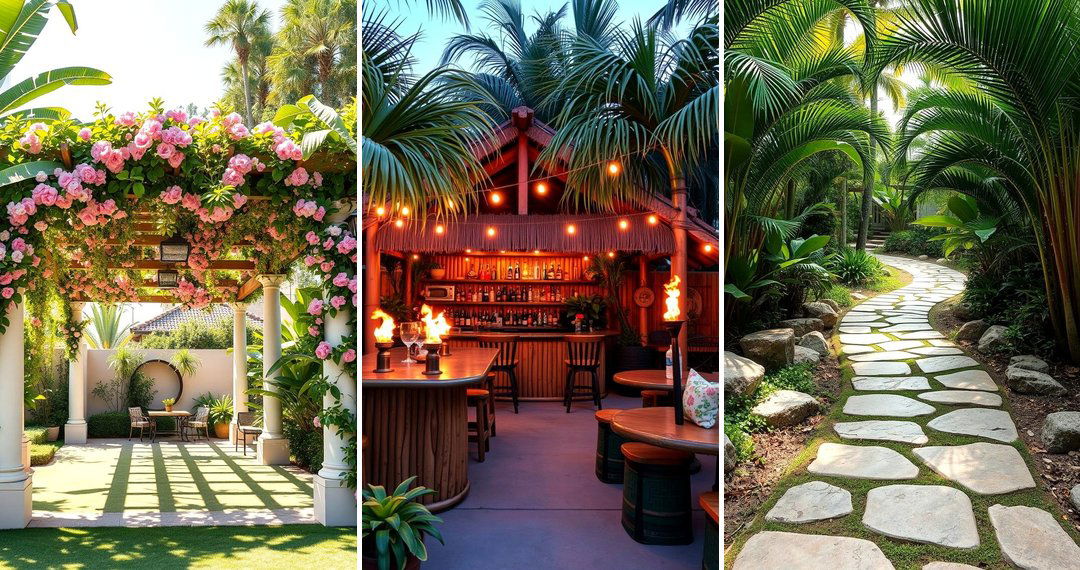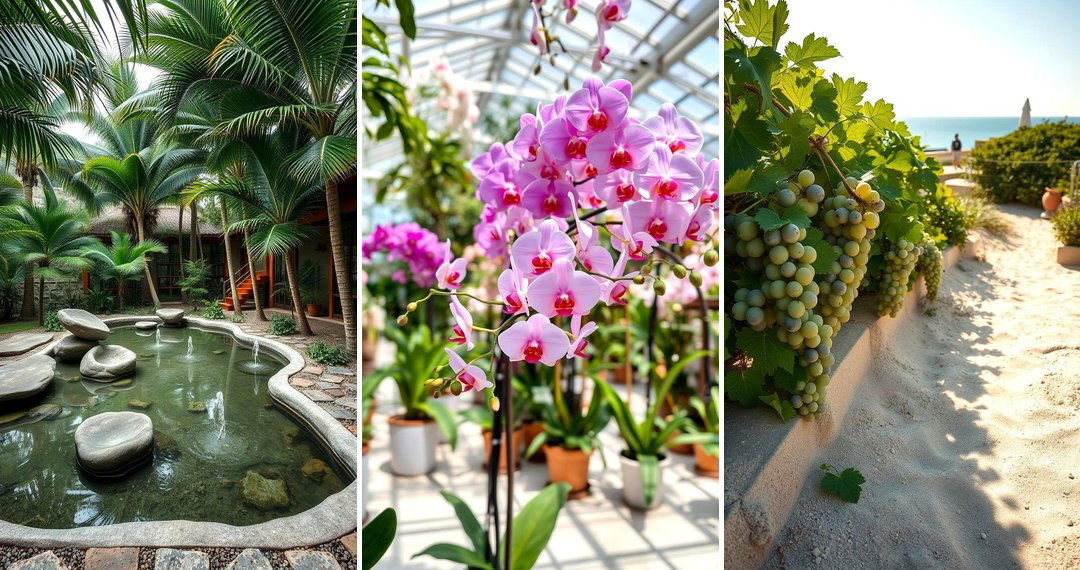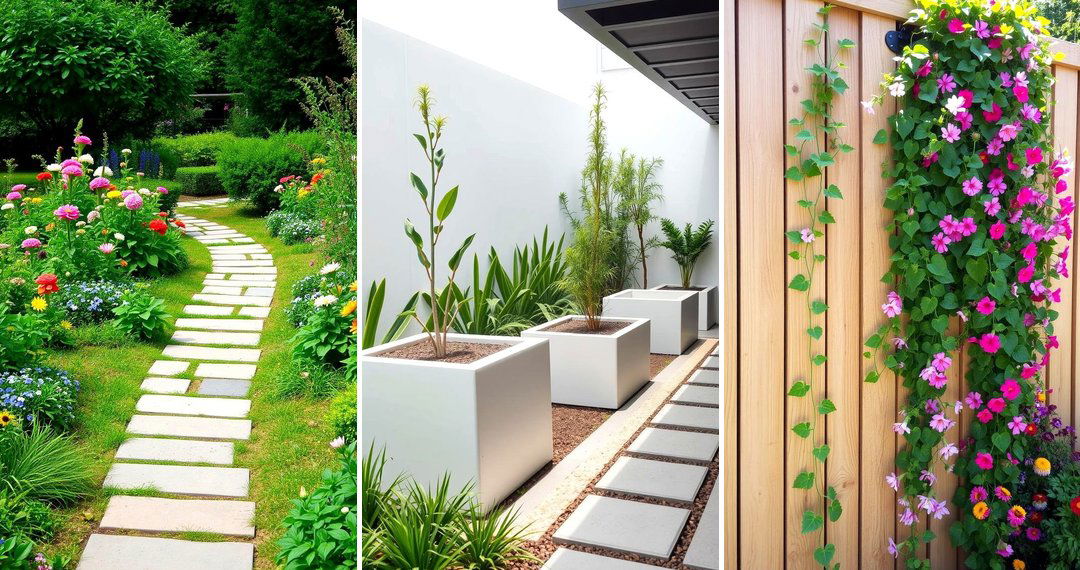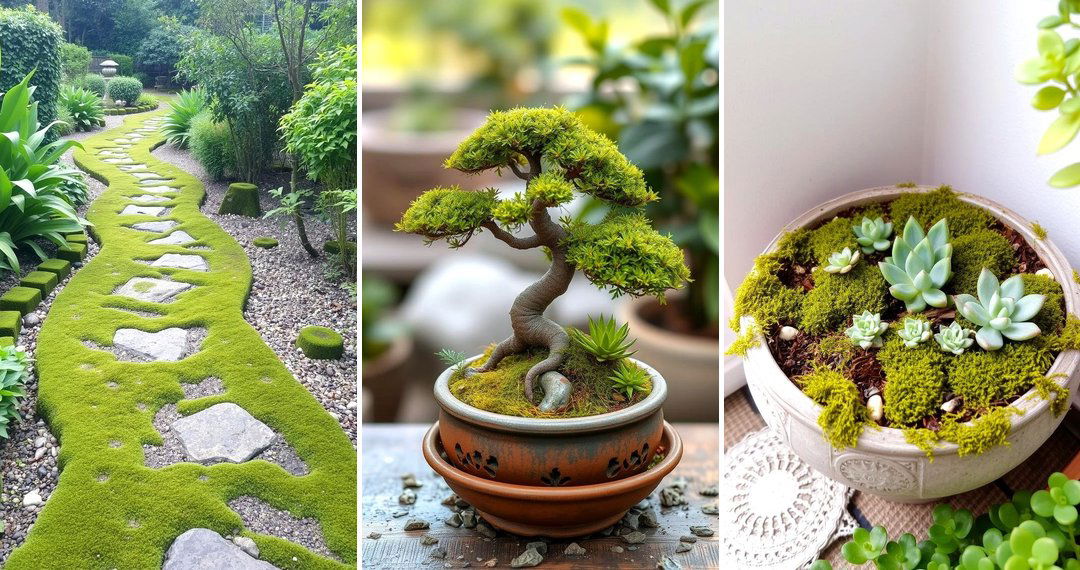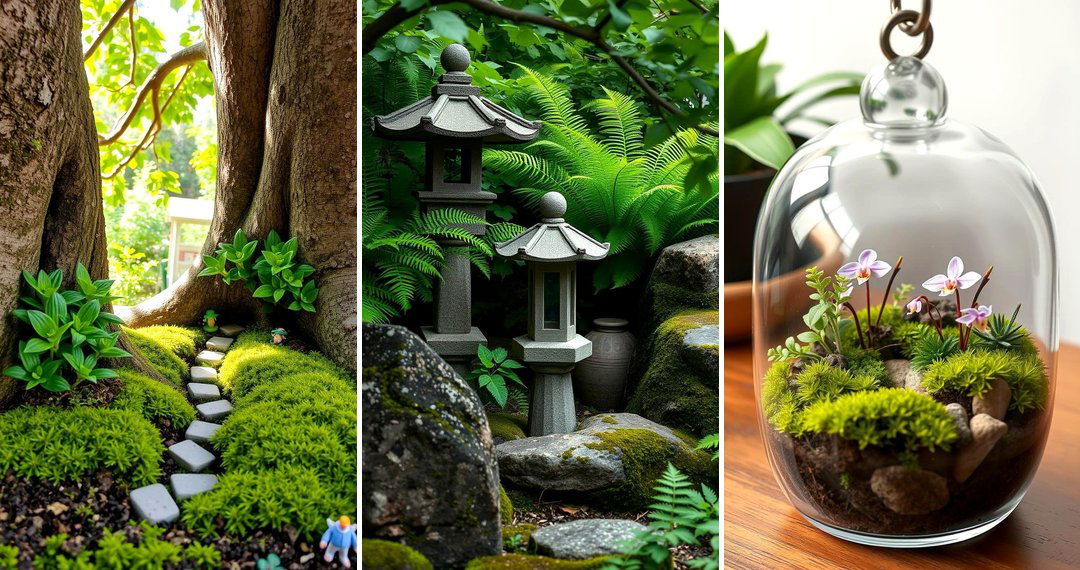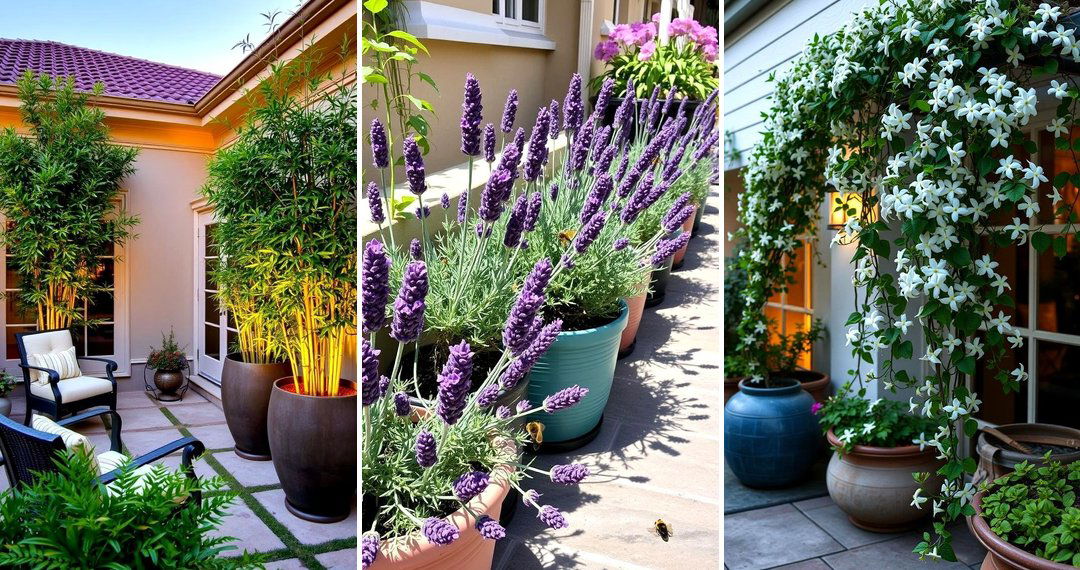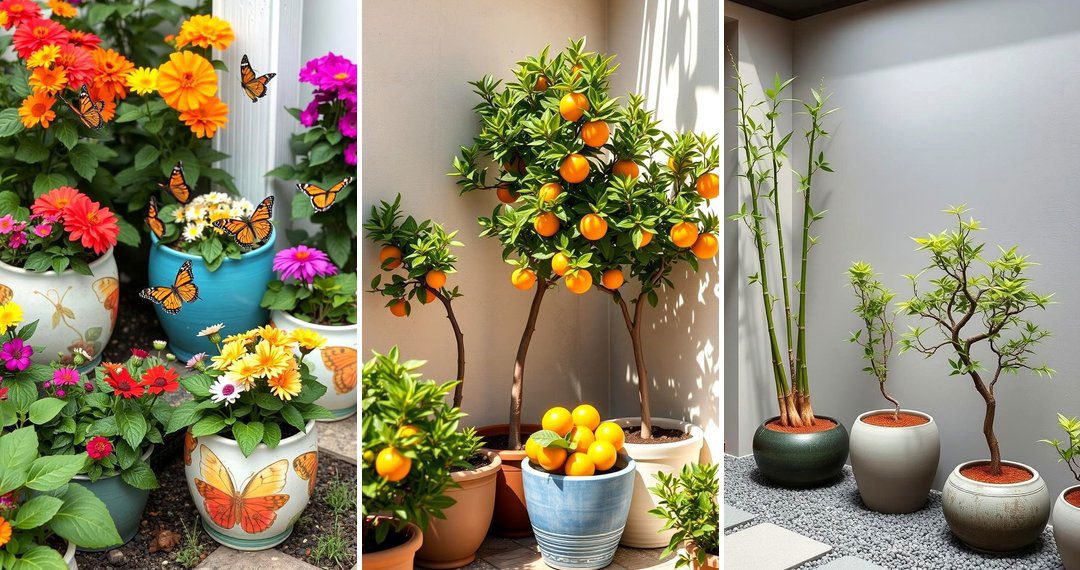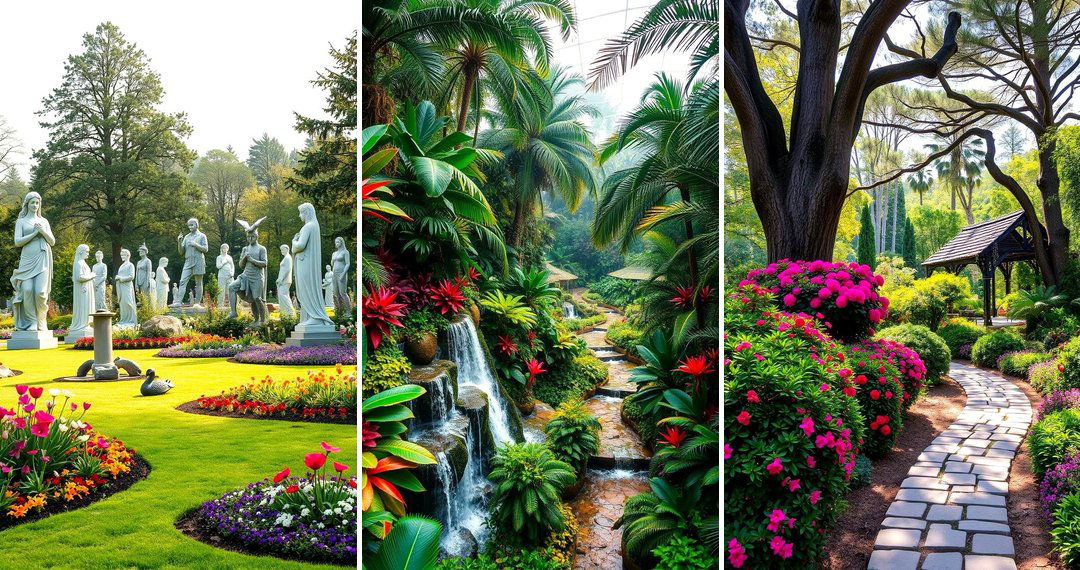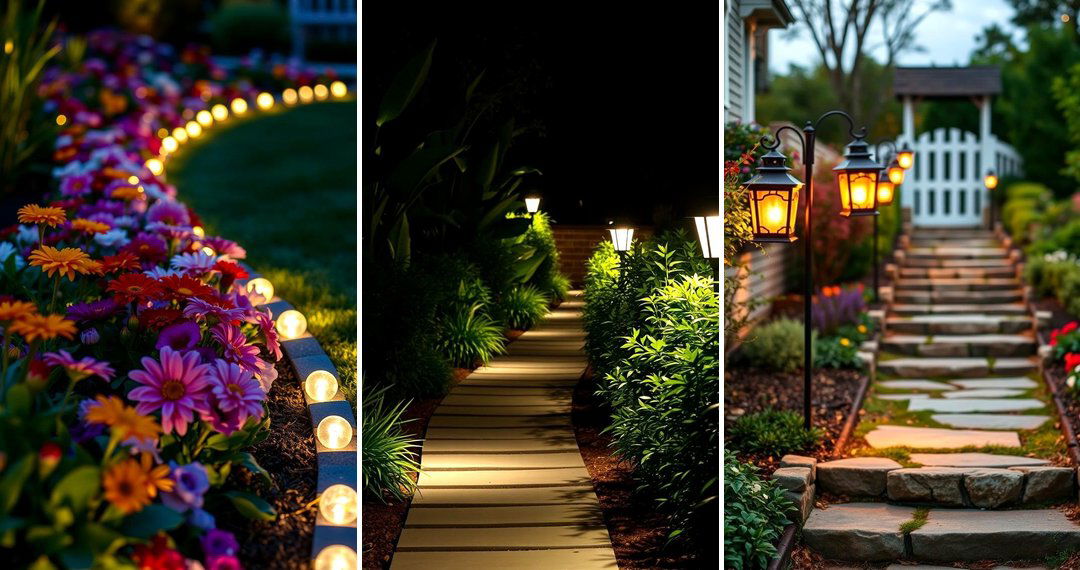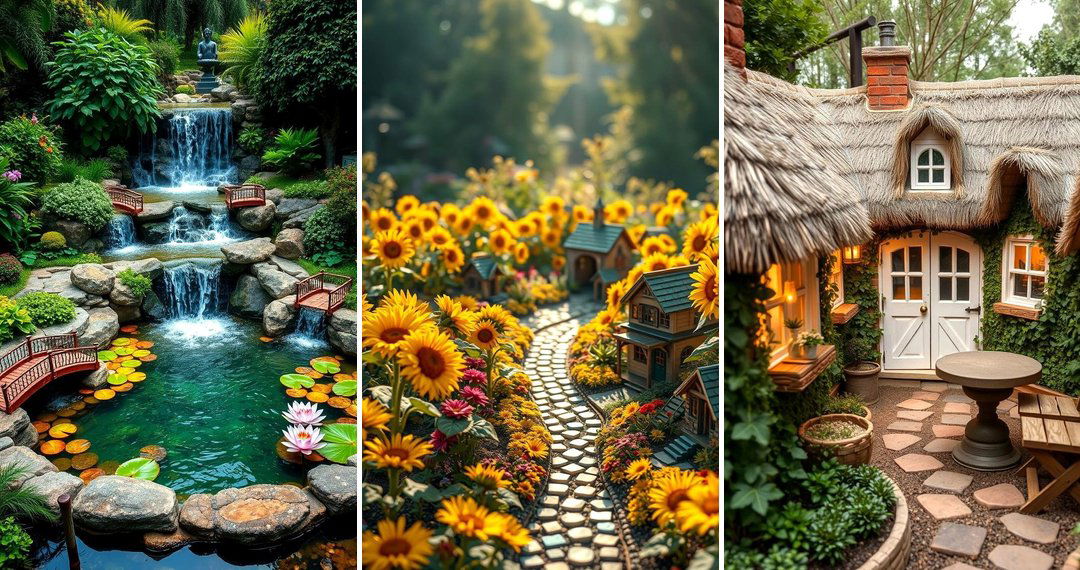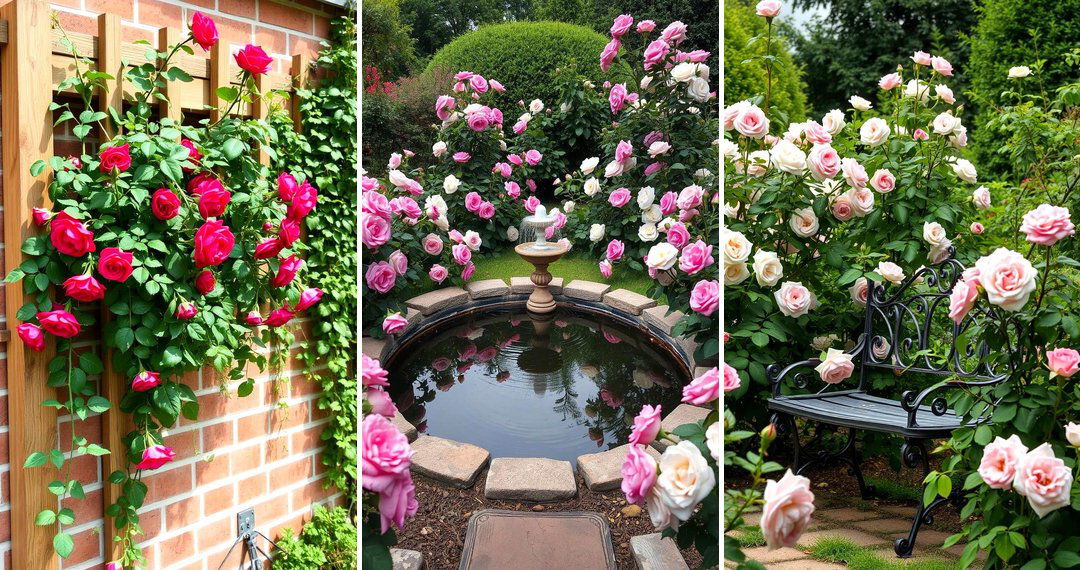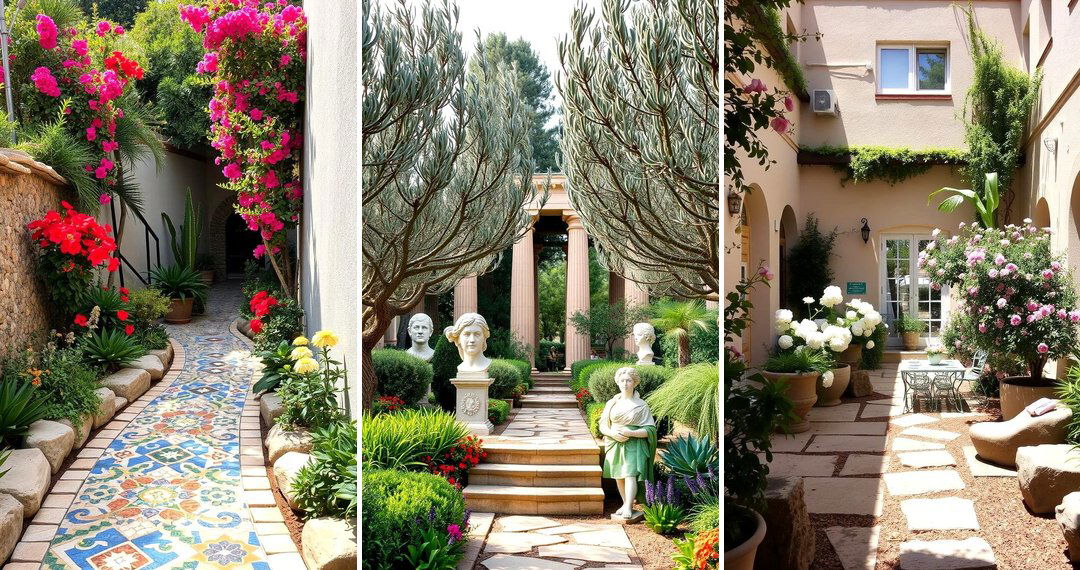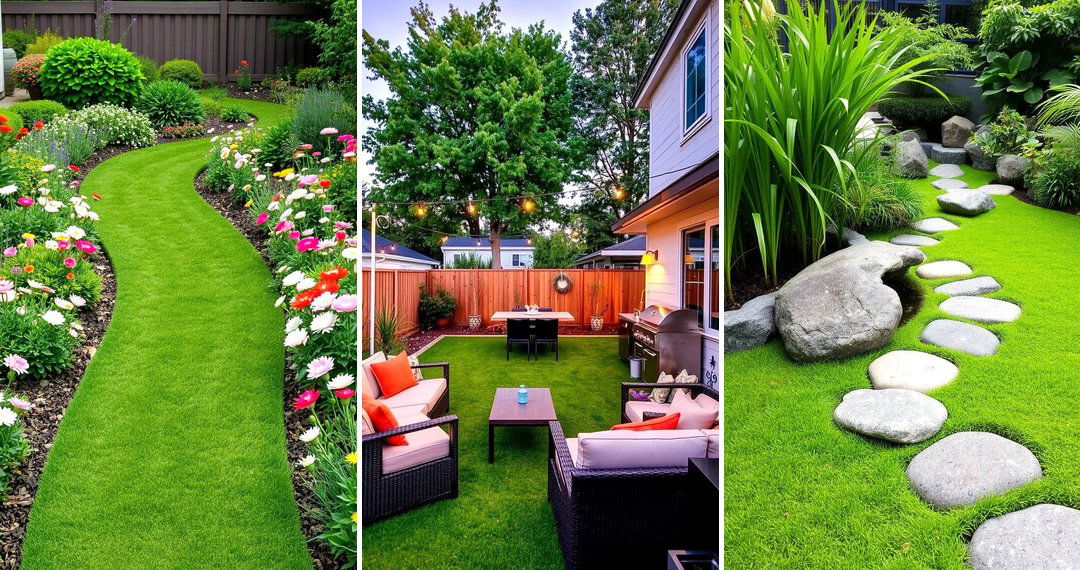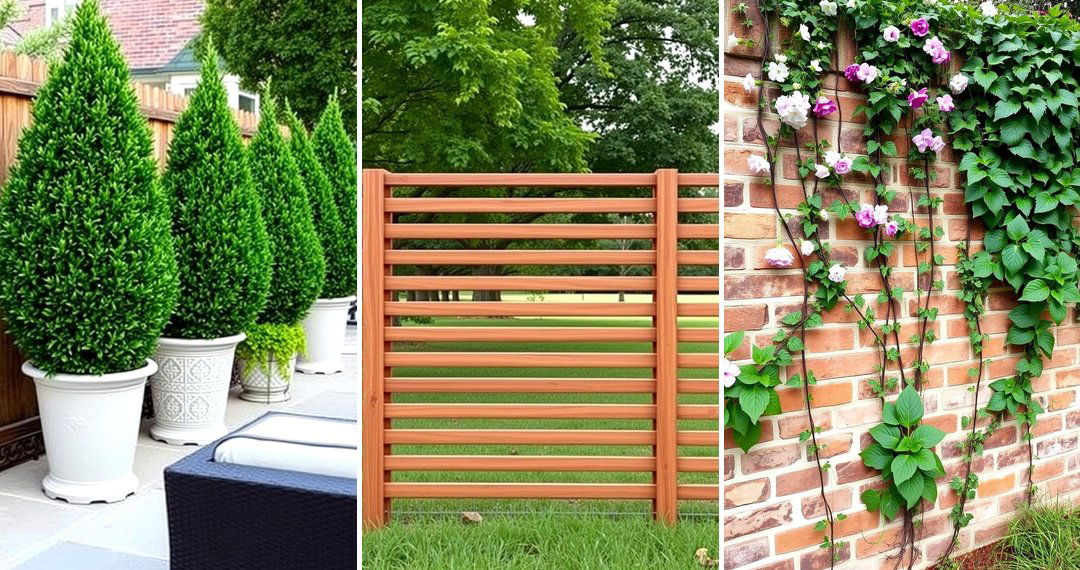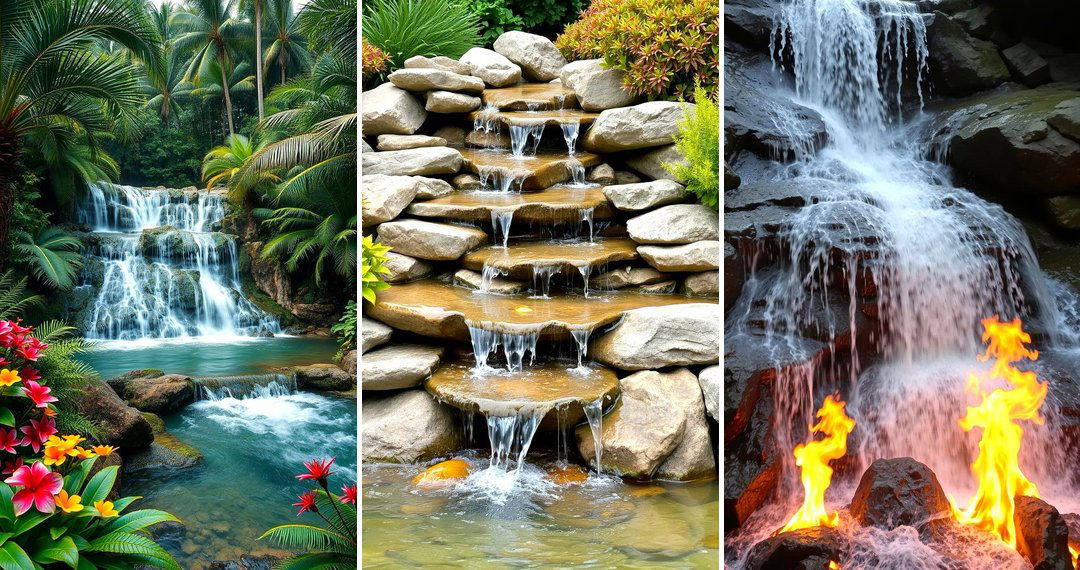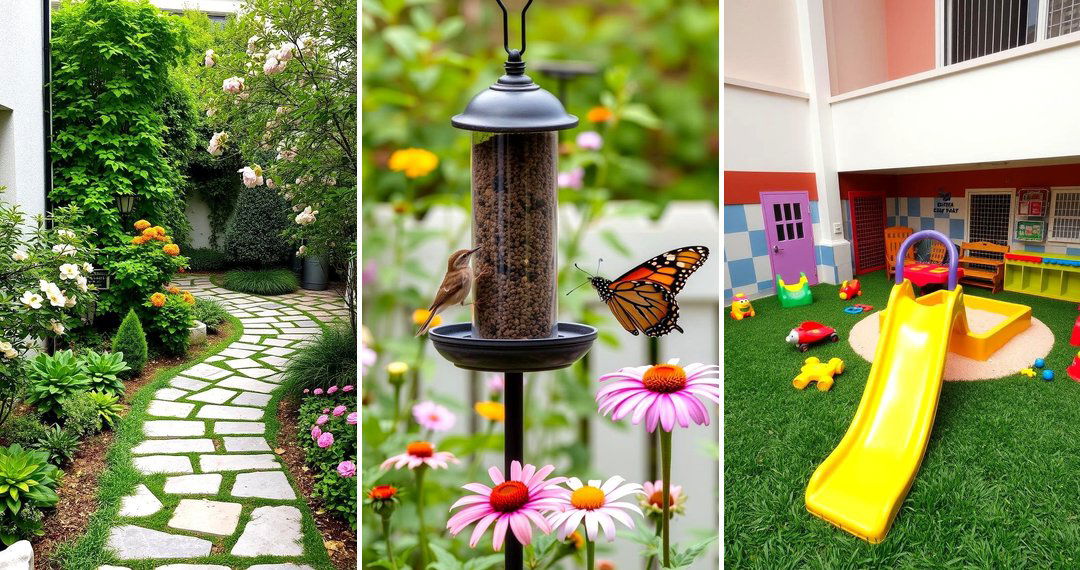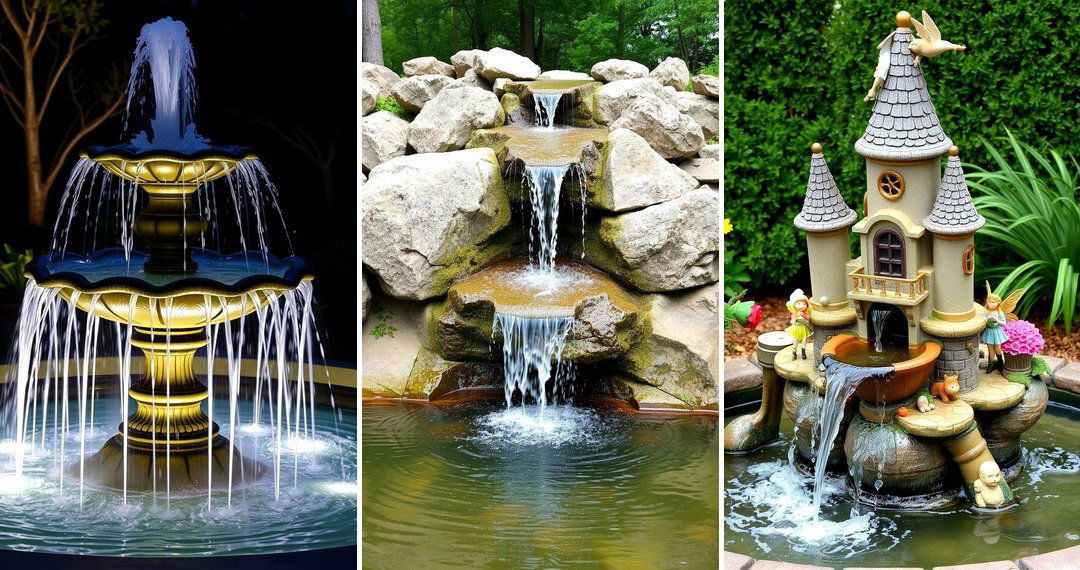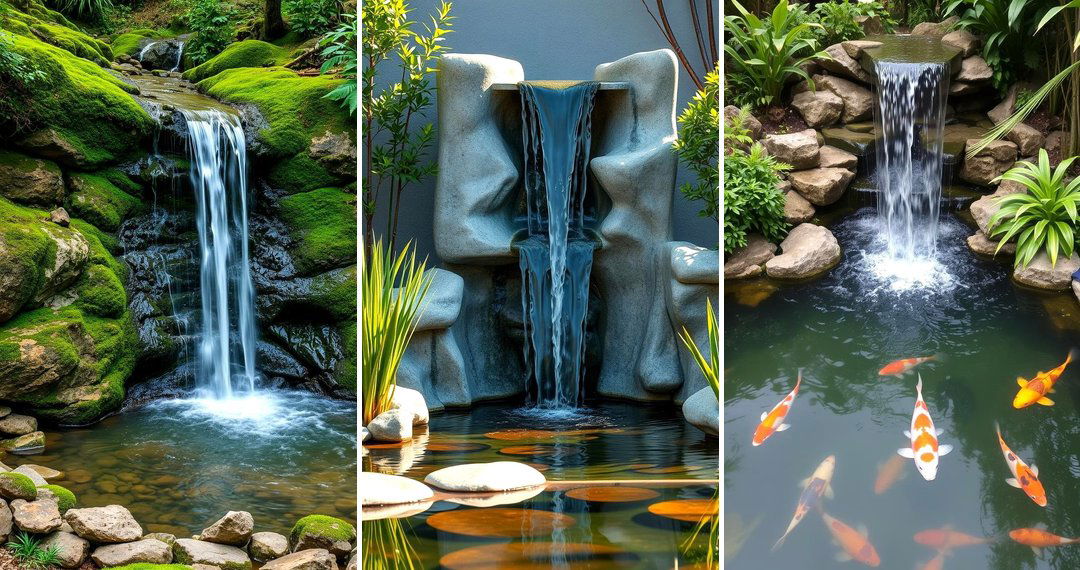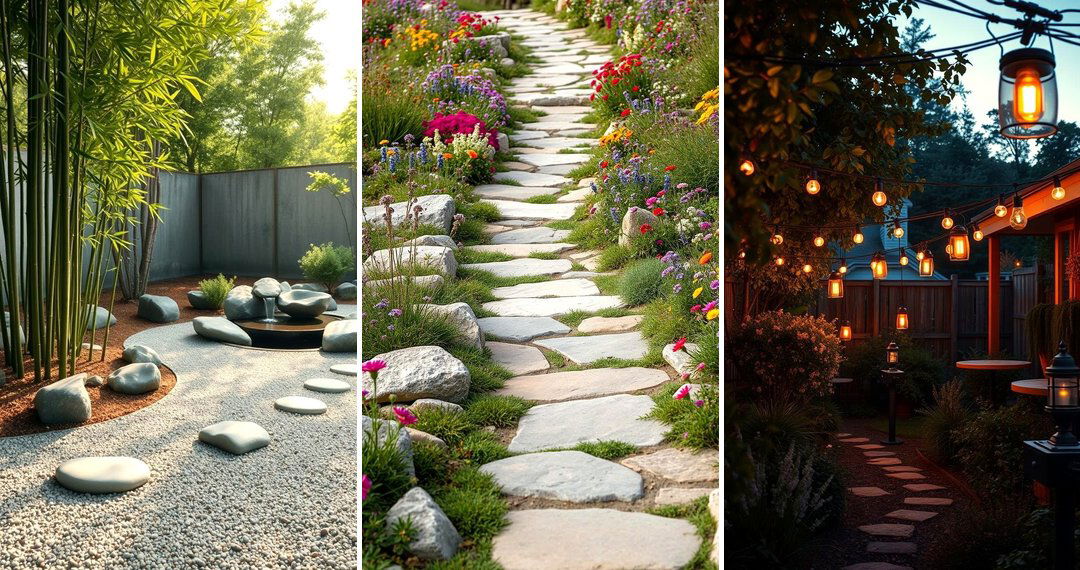Embrace the warmth and vibrancy of the Mediterranean right in your own backyard. Imagine sun-drenched spaces filled with fragrant herbs, colorful blooms, and the soothing sounds of trickling water. Crafting a Mediterranean garden is not just about planting; it's about creating a lifestyle, an oasis of tranquility that evokes the charm and beauty of the Mediterranean coast. With thoughtful design and the right plant choices, you can transform your outdoor area into a stunning retreat that thrives in warm climates and delights the senses. Let's explore the inspiring possibilities that await as we delve into a collection of Mediterranean garden ideas.
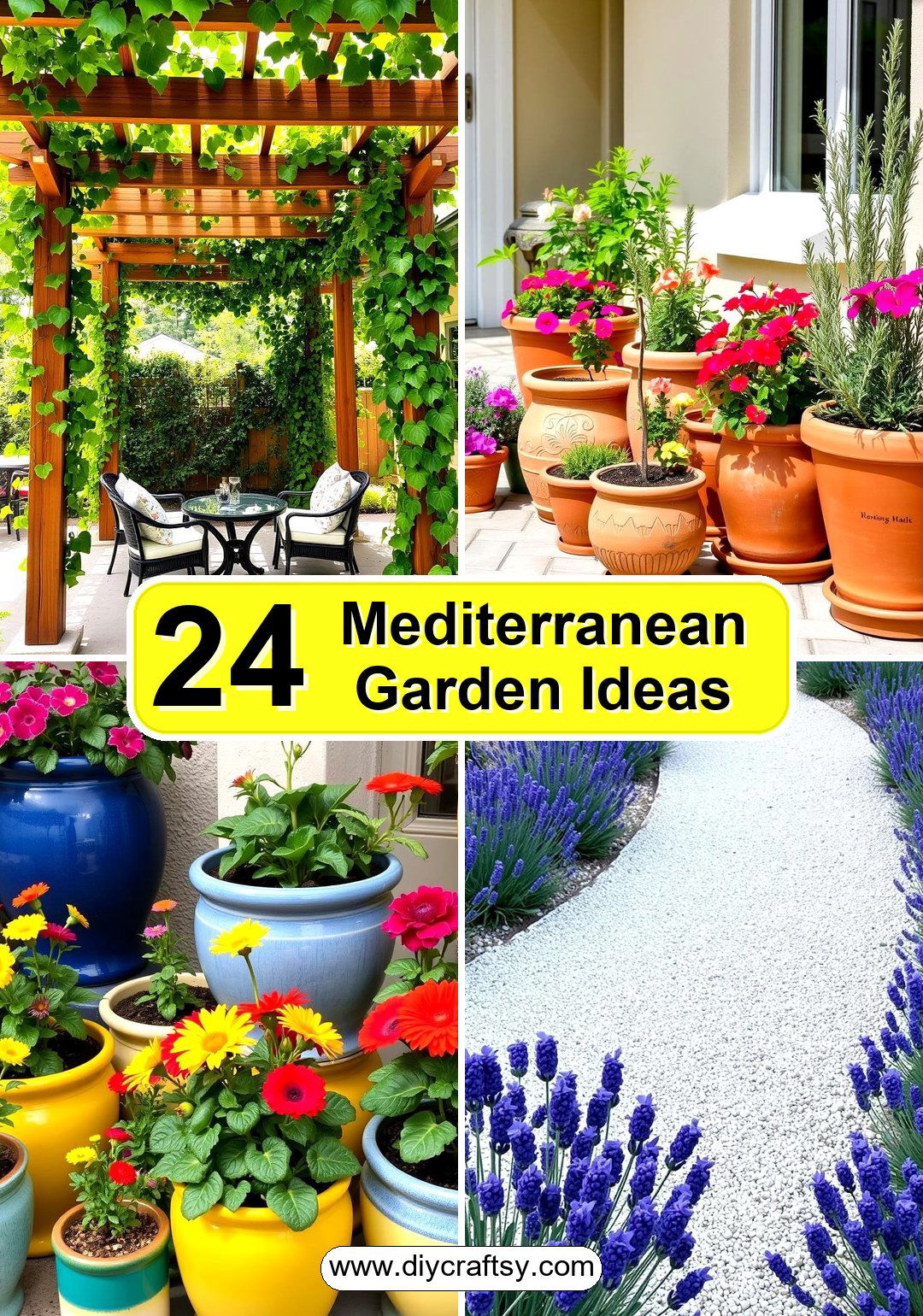
1. Terracotta Treasures
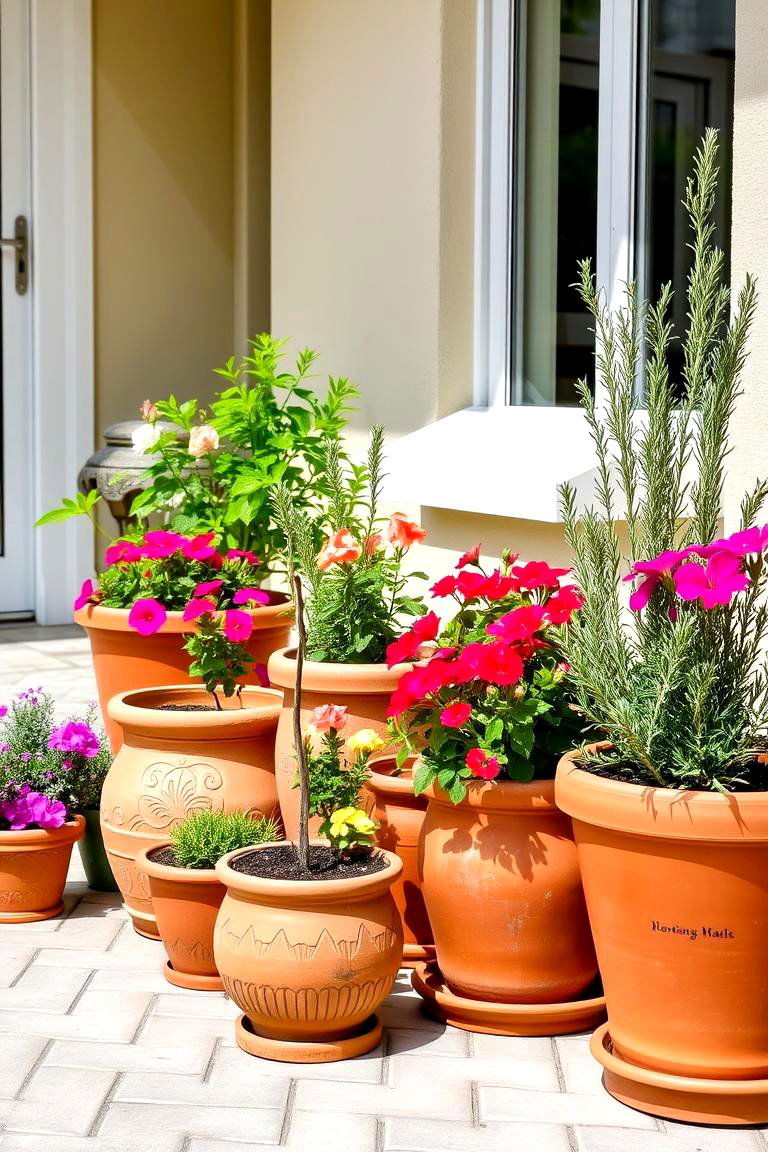
The timeless appeal of terracotta pots brings an authentic Mediterranean touch to any garden. These earthy vessels, in various shapes and sizes, not only beautifully showcase plants but also retain warmth, which many Mediterranean varieties appreciate. Consider grouping different sized terracotta pots together to create visual interest on patios, balconies, or along pathways. The porous nature of terracotta also helps with drainage, preventing root rot, a common concern for some plants. Filling them with vibrant geraniums, fragrant herbs like rosemary and thyme, or even small olive trees can instantly transport you to the sun-kissed shores of the Mediterranean.
2. Serene Gravel Pathways
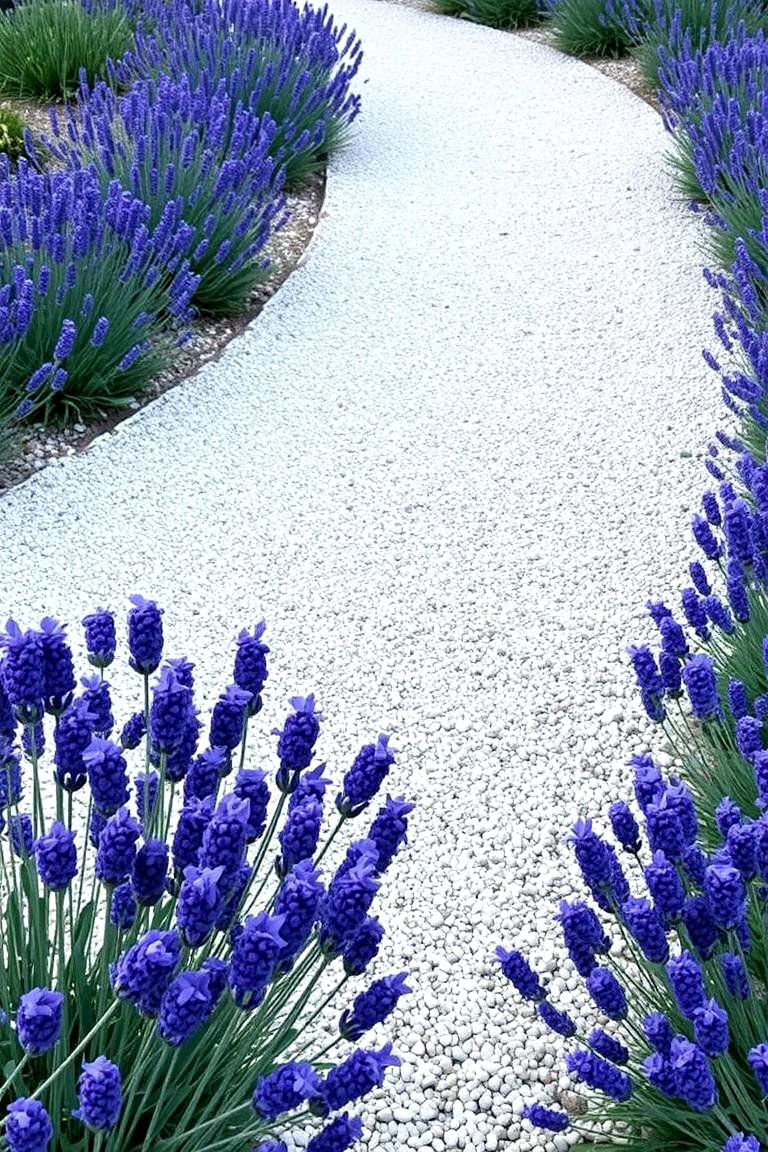
For creating an authentic Mediterranean feel underfoot, gravel pathways are an excellent choice. The crunch of gravel adds a sensory element to the garden, and its permeable nature allows for good drainage. Opt for light-colored gravel, such as pea gravel or crushed stone, to reflect sunlight and keep the garden cooler. These pathways can meander through planting beds, leading to different areas of the garden and creating a sense of exploration. Edging the pathways with low-growing plants like lavender or santolina will soften the look and add fragrance.
3. Iconic Olive Trees
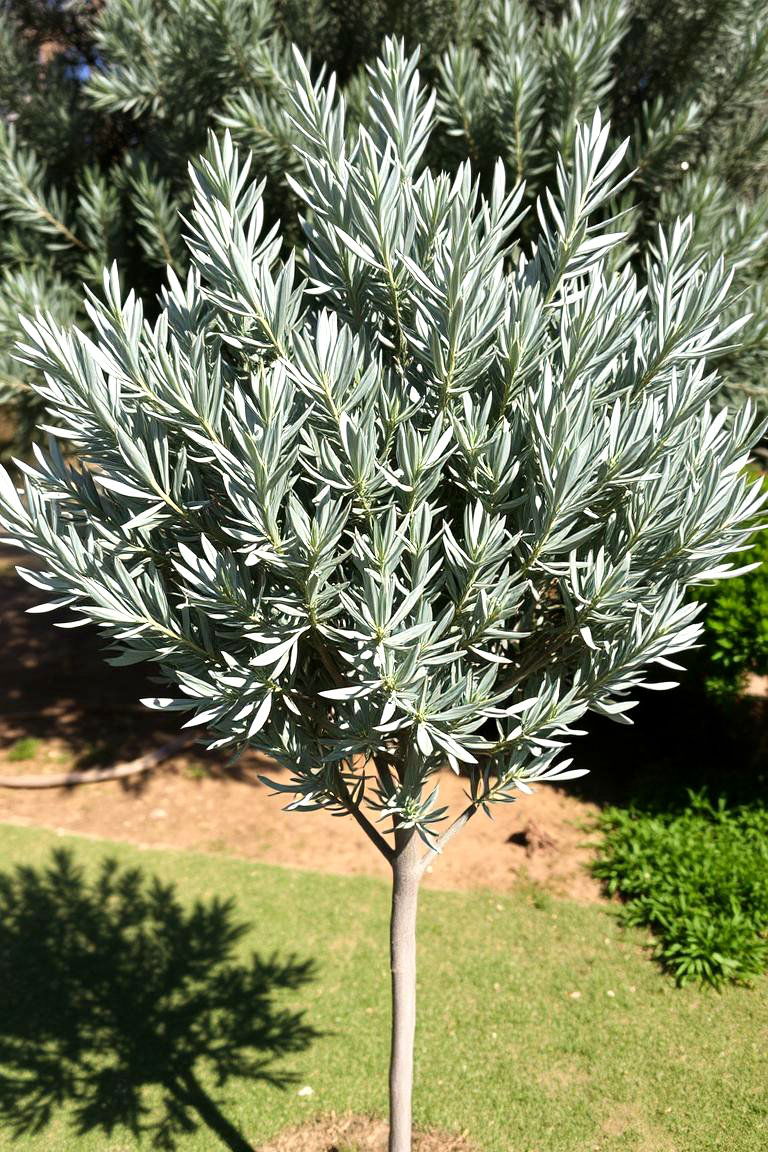
No Mediterranean garden is truly complete without the presence of an olive tree. These ancient trees, with their silvery-green leaves and gnarled trunks, are not only beautiful but also incredibly resilient and drought-tolerant. Even a single olive tree can become a stunning focal point in your garden, evoking the timeless landscapes of the Mediterranean. They thrive in sunny locations and well-drained soil, making them well-suited to many climates. Consider planting one in a large container if you have limited space or incorporating it into a mixed planting bed.
4. Fragrant Lavender Fields
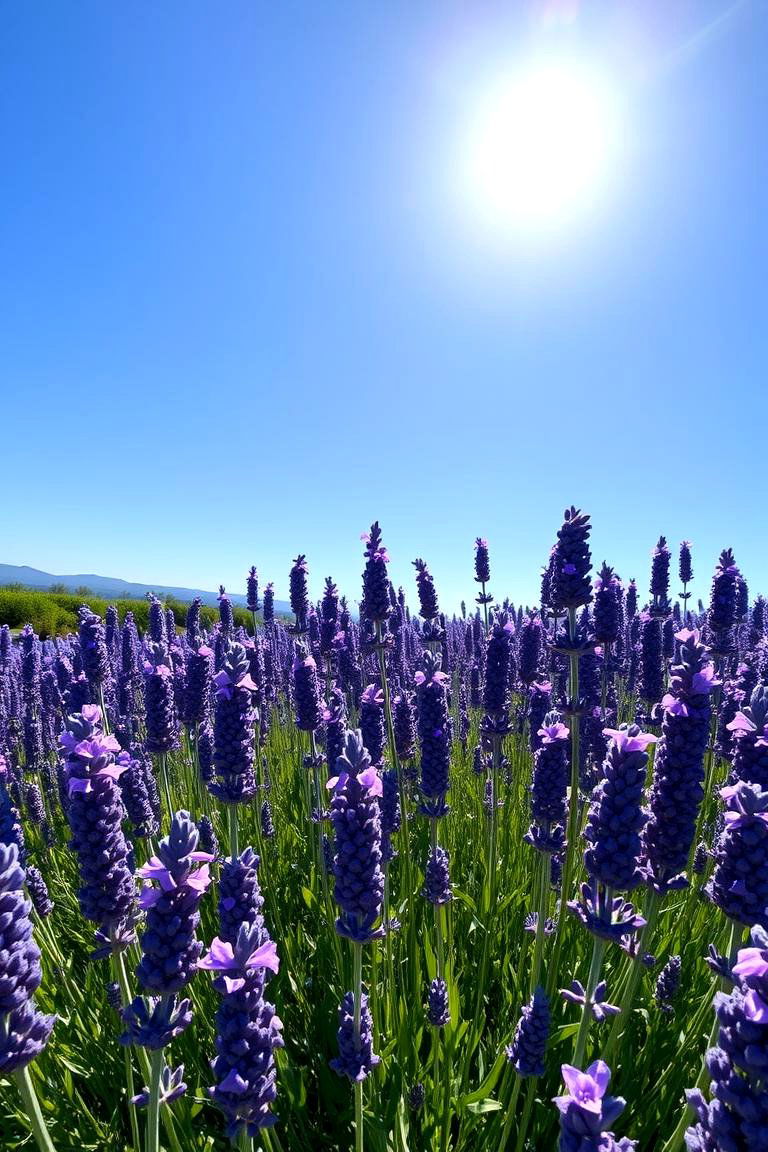
Imagine the soothing scent and stunning purple hues of lavender wafting through your garden. Planting swathes of lavender is a quintessential element of Mediterranean garden design. This aromatic herb not only adds beauty and fragrance but also attracts pollinators like bees and butterflies. Lavender thrives in full sun and well-drained soil, making it an ideal choice for dry, sunny climates. Consider planting it along borders, in rock gardens, or even in containers for a burst of color and fragrance.
5. Zesty Citrus Delights
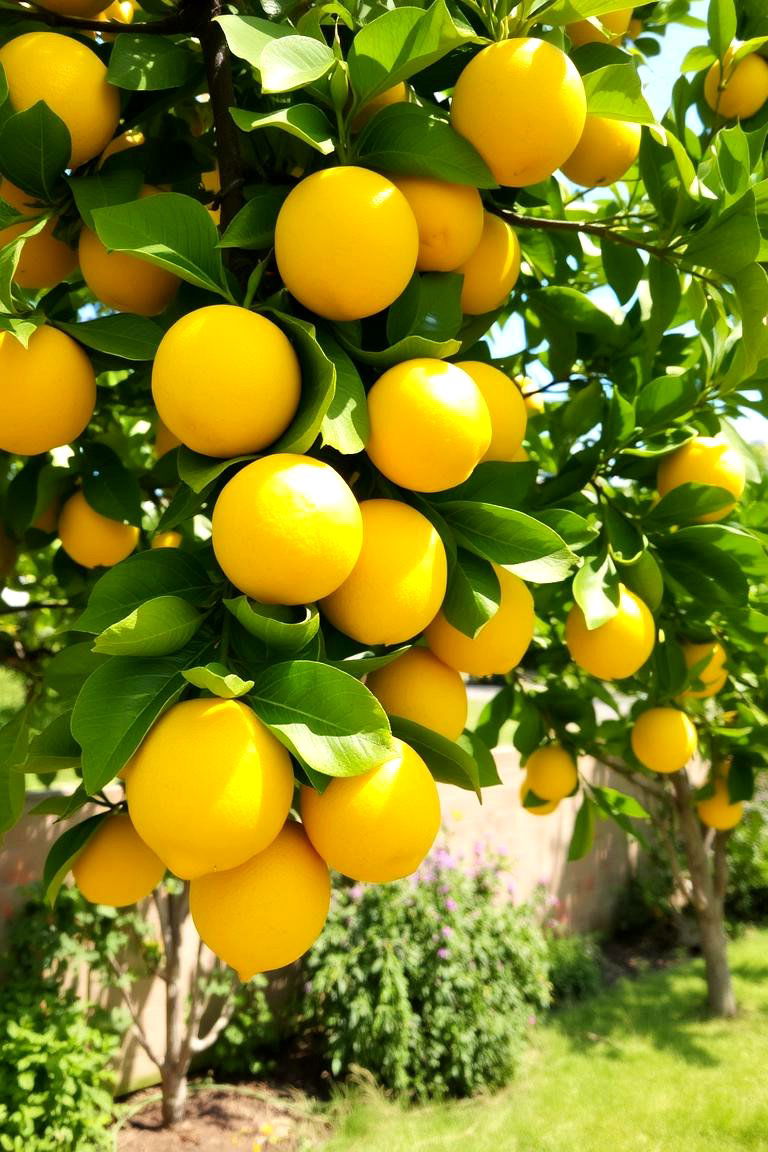
Bringing the vibrant flavors and aromas of the Mediterranean to your garden is easy with citrus trees. Lemon, orange, and lime trees not only produce delicious fruit but also boast glossy green leaves and fragrant blossoms. These trees thrive in sunny, sheltered locations and well-drained soil. While some varieties may need protection in colder climates, they can often be grown in containers and moved indoors during winter. Imagine picking fresh lemons for your lemonade or enjoying the sweet scent of orange blossoms in the air.
6. Rustic Stone Walls
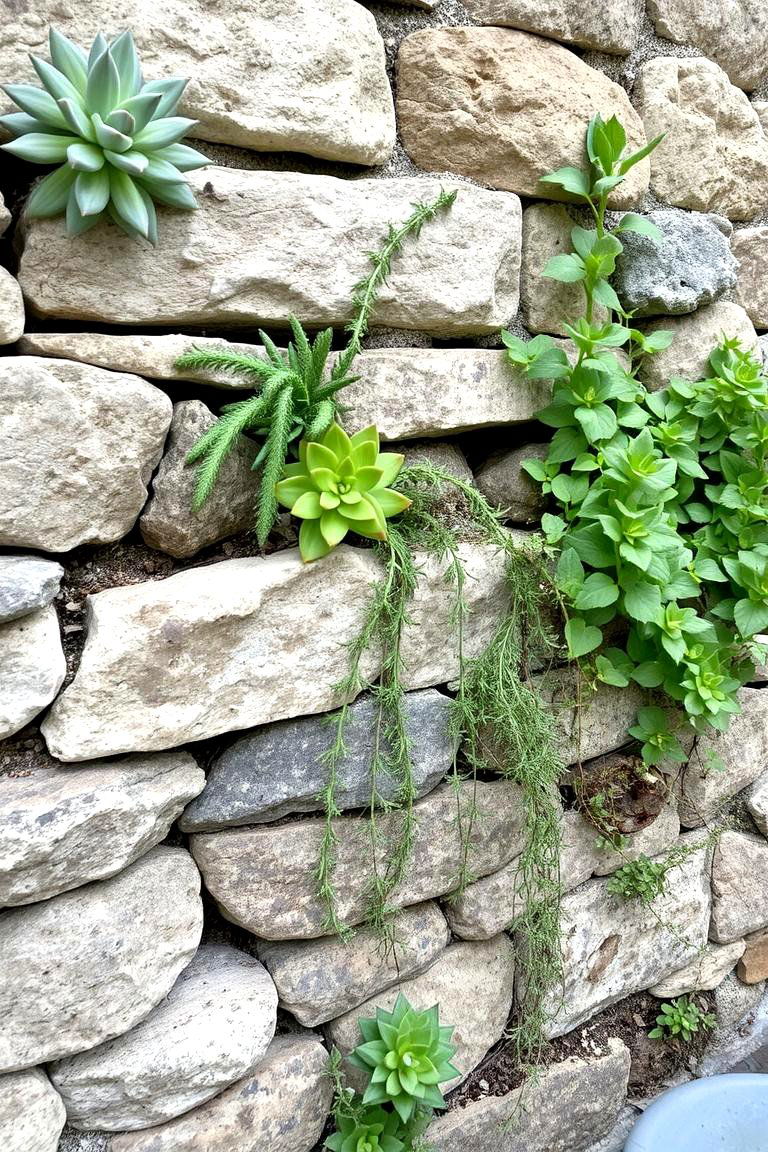
Adding natural stone walls or low rockeries can significantly enhance the Mediterranean ambiance of your garden. These structures not only add visual interest and texture but also provide excellent drainage for plants that prefer drier conditions. Use local stone if possible to create a sense of place and authenticity. Stone walls can also help to create microclimates within the garden, offering sheltered spots for more delicate plants. Consider incorporating crevices in the walls for planting small succulents or trailing herbs.
7. Aromatic Herb Haven
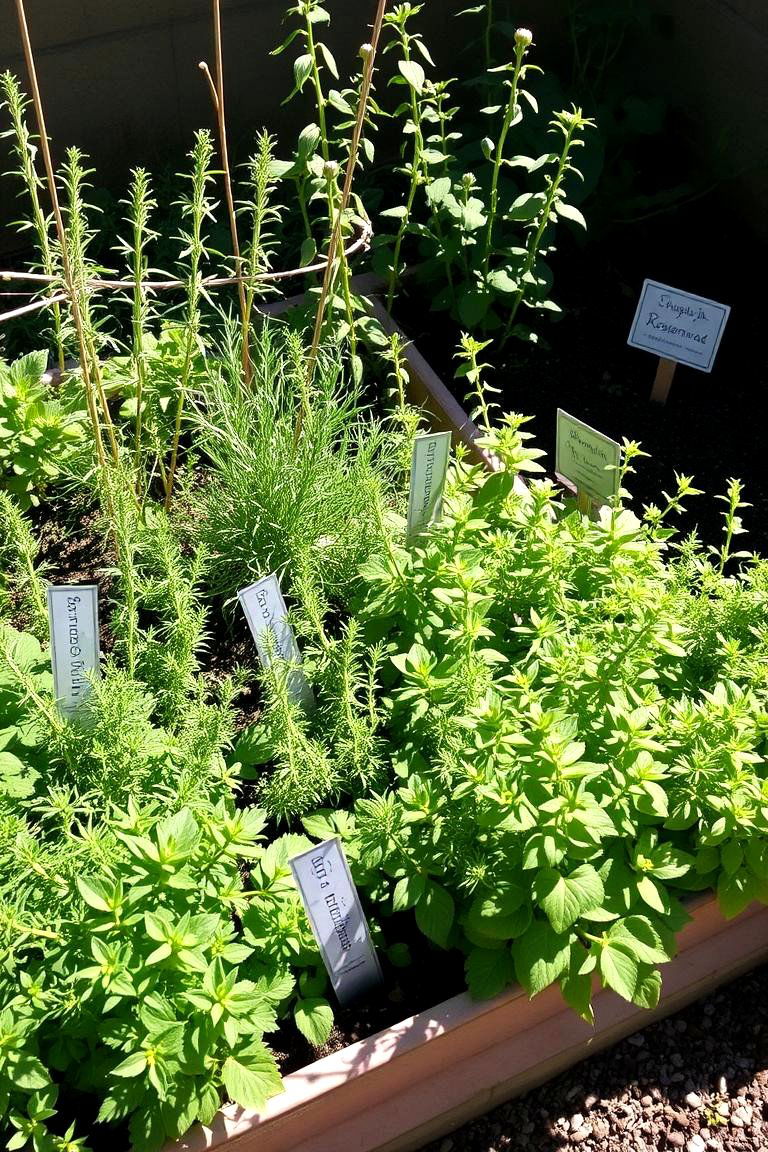
A dedicated herb garden is a must-have for any Mediterranean enthusiast. The region is renowned for its flavorful herbs like rosemary, thyme, oregano, sage, and basil, all of which thrive in sunny, well-drained conditions. Create a dedicated bed or use containers to grow these culinary delights close to your kitchen for easy access. The fragrant foliage will not only enhance your cooking but also release their aromatic oils into the air as you brush past them.
8. Soothing Water Features
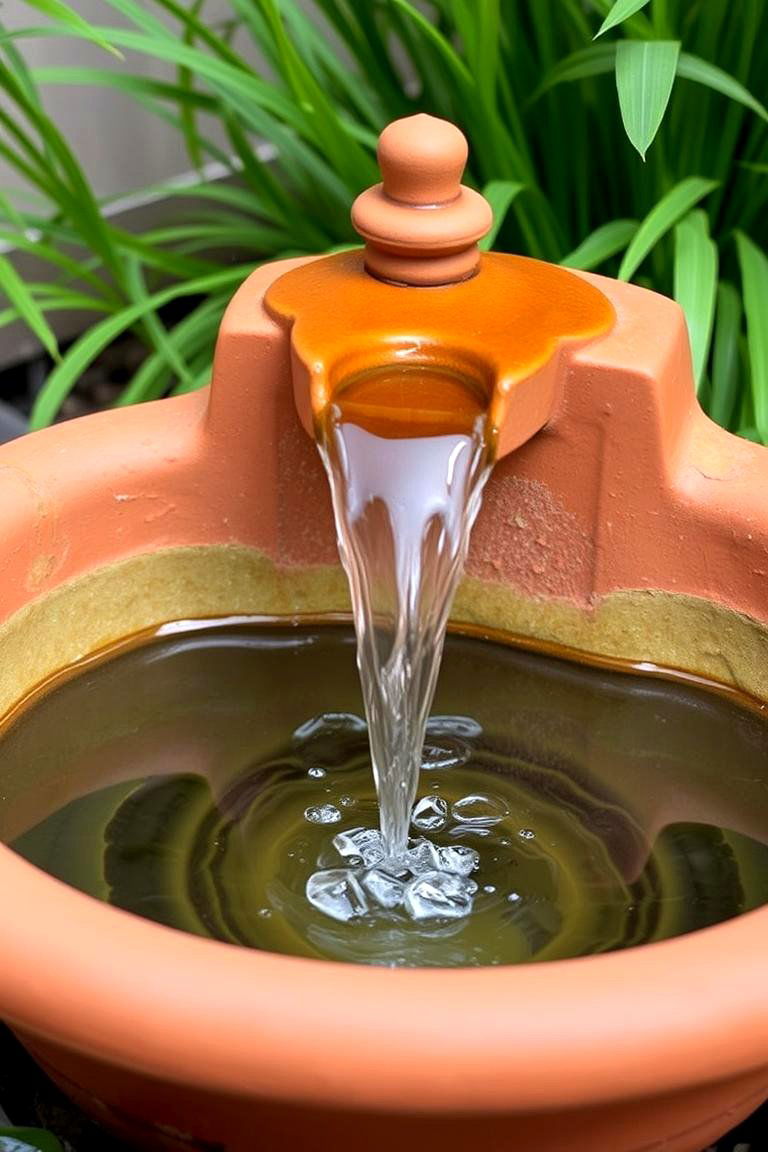
The gentle sound of trickling water can add a sense of tranquility and coolness to a Mediterranean garden, especially during hot summer months. Consider incorporating a small fountain, a wall-mounted water feature, or even a simple terracotta bowl filled with water. Water features can attract birds and other wildlife, adding another layer of life to your garden. Choose designs that complement the natural and rustic aesthetic of a Mediterranean garden.
9. Elegant Wrought Iron Accents
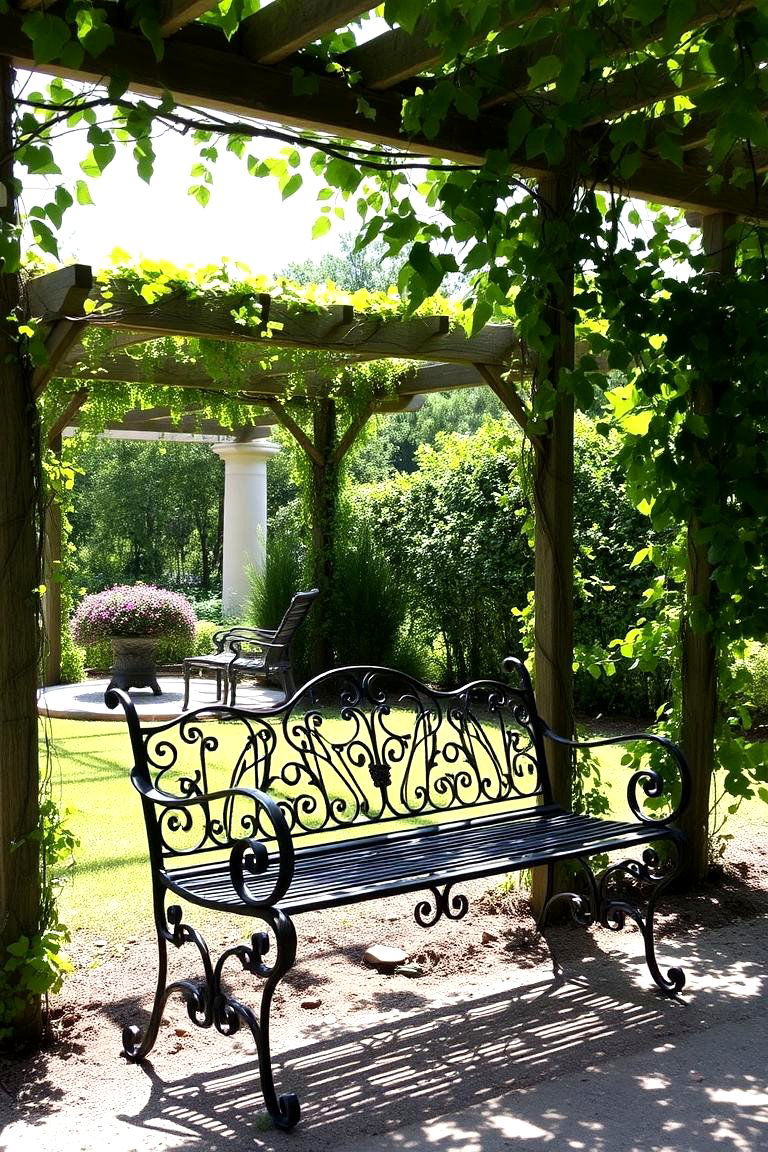
The timeless elegance of wrought iron furniture and decorative elements perfectly complements the Mediterranean style. Consider adding a wrought iron bench in a shady spot, a set of chairs and a table for outdoor dining, or even a decorative iron gate or trellis. The dark metal provides a beautiful contrast against the lighter colors of stone, gravel, and sun-drenched foliage. Wrought iron is also durable and can withstand the elements, making it a practical choice for outdoor spaces.
10. Verdant Pergola Retreat
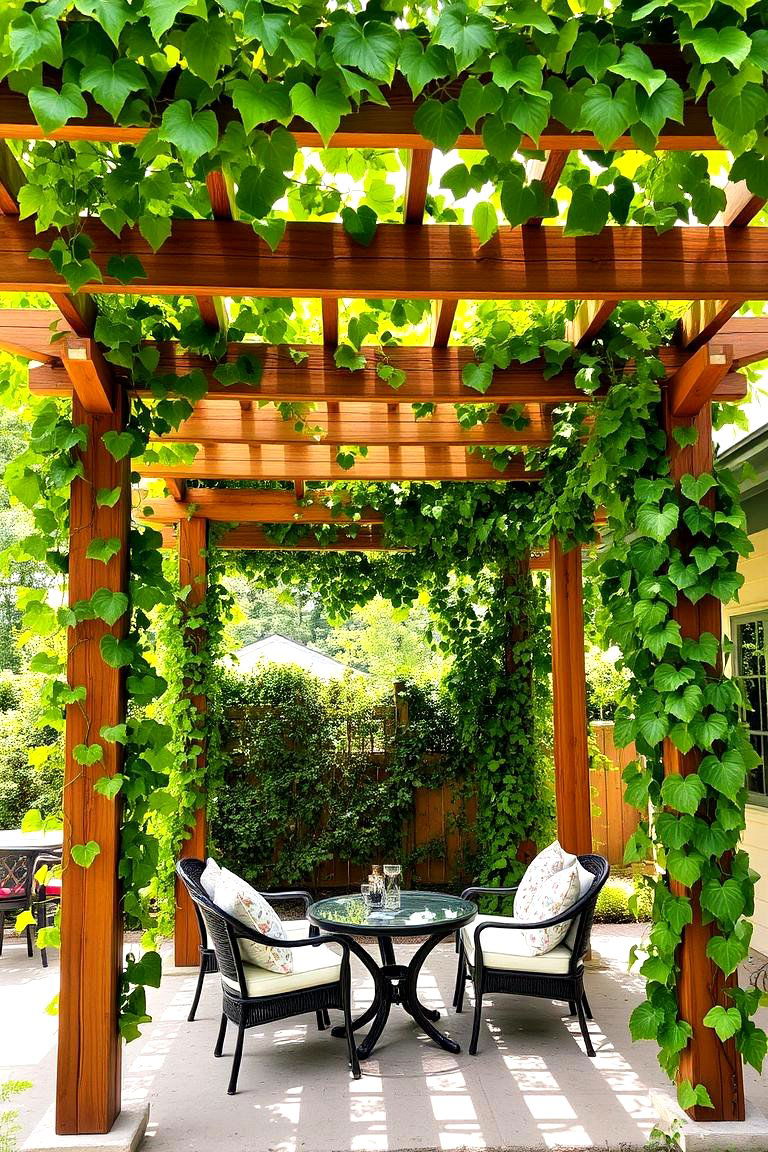
Creating a shaded retreat with a pergola draped in climbing vines is an essential element of a Mediterranean garden. A pergola provides a cool and inviting space to relax and escape the midday sun. Train climbing plants like grapevines, bougainvillea, or climbing roses to grow over the structure, creating a natural canopy of shade and beauty. This outdoor living area can be further enhanced with comfortable seating and perhaps even an outdoor rug.
11. Vibrant Sun-Kissed Blooms
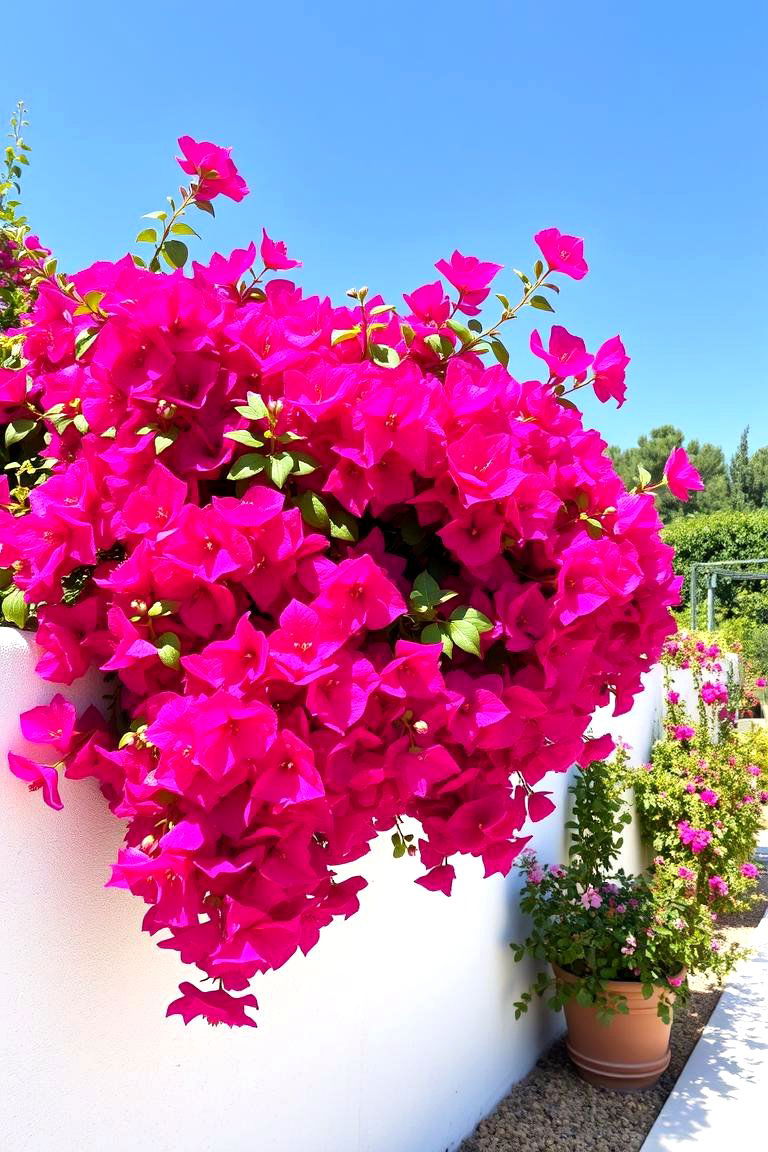
Mediterranean gardens are often characterized by their vibrant and colorful flowers that thrive in sunny conditions. Consider incorporating plants like bougainvillea with its dazzling magenta bracts, geraniums in shades of red, pink, and white, and vibrant lantana. These flowering plants not only add visual appeal but also attract pollinators and bring a lively energy to the garden. Plant them in sunny borders, containers, or cascading from walls.
12. Alfresco Culinary Corner
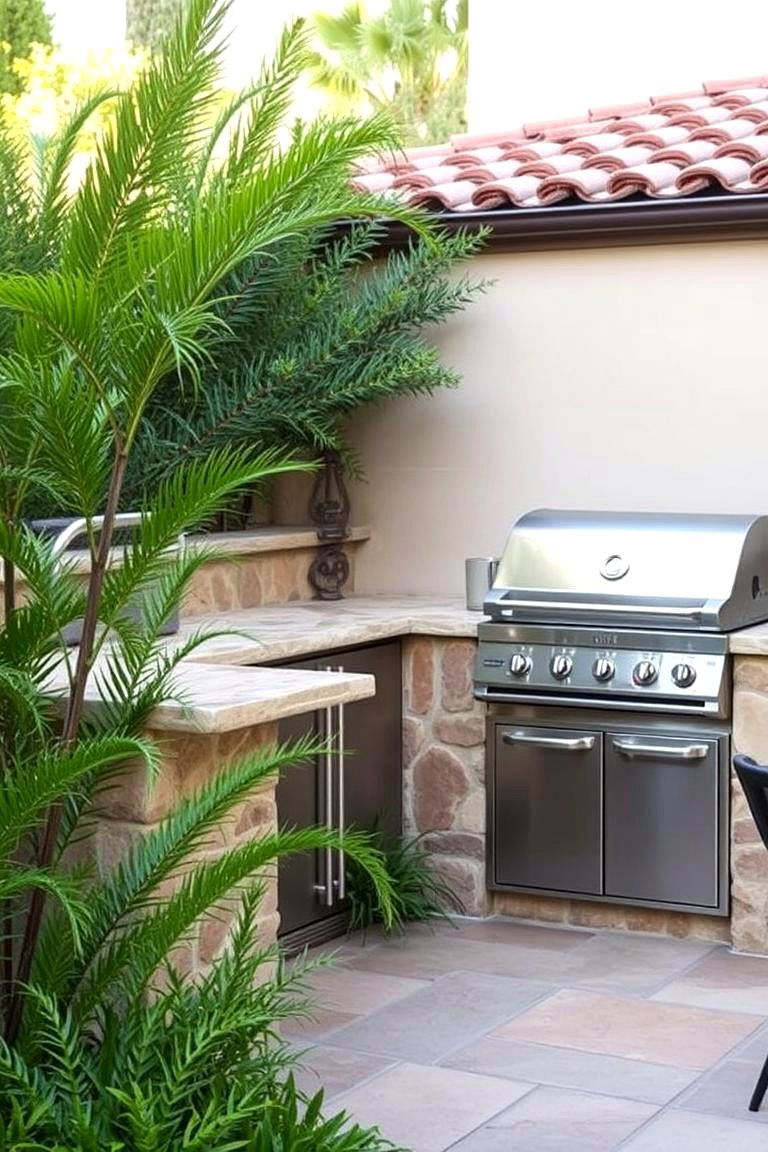
Embrace the Mediterranean lifestyle of outdoor dining by creating a dedicated outdoor kitchen area. This could range from a simple built-in grill and countertop to a more elaborate setup with a pizza oven and sink. An outdoor kitchen provides the perfect space to prepare and enjoy meals al fresco, surrounded by the beauty and fragrance of your garden. Use natural materials like stone and wood to blend the kitchen seamlessly with the garden's aesthetic.
13. Artistic Mosaic Details
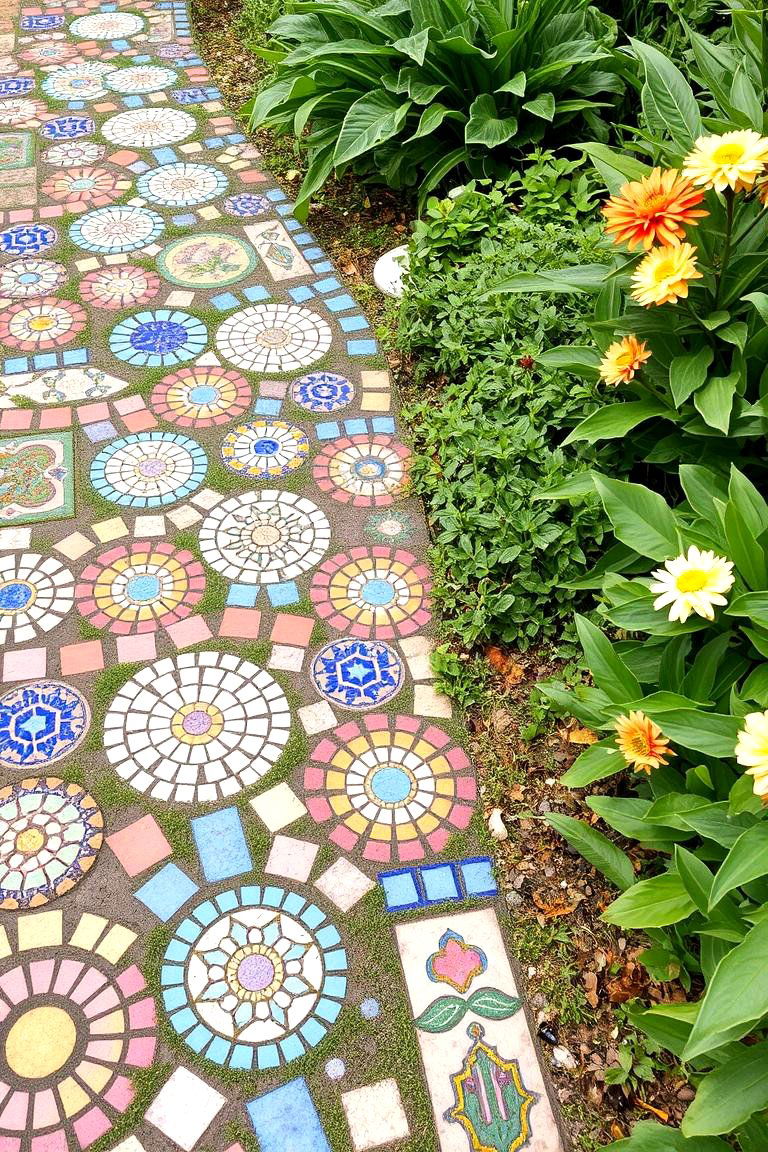
Adding touches of mosaic art can bring a unique and colorful Mediterranean flair to your garden. Consider incorporating mosaic tiles into pathways, patios, fountains, or even as decorative accents on walls or planters. The intricate patterns and vibrant colors of mosaic art can add a personal touch and reflect the artistic heritage of the Mediterranean region. You can even try your hand at creating your own mosaic pieces for a truly bespoke look.
14. Resilient Drought-Tolerant Planting
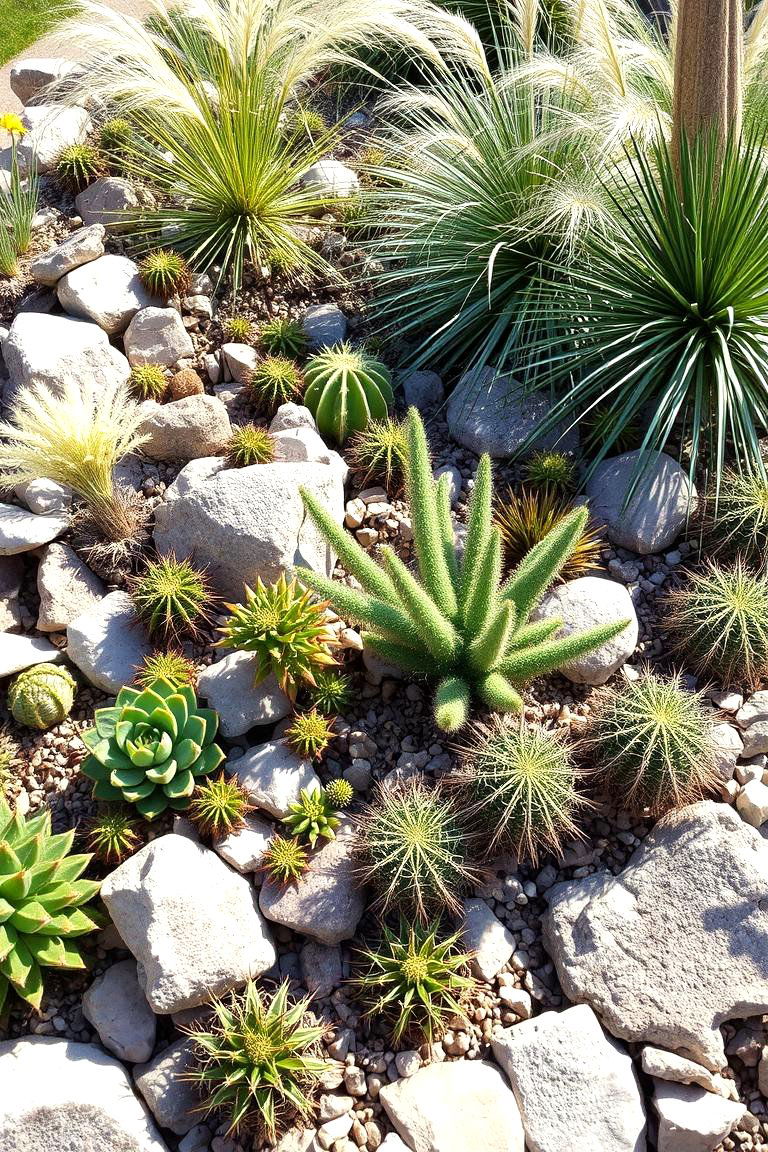
Given the warm and often dry climate of the Mediterranean, prioritizing drought-tolerant plants is key to creating a sustainable and low-maintenance garden. Choose plants like succulents, cacti, rosemary, lavender, thyme, and ornamental grasses that are adapted to thrive with minimal watering. This not only conserves water but also ensures your garden remains beautiful even during dry spells. Group plants with similar water needs together for efficient watering.
15. Elevated Raised Garden Beds
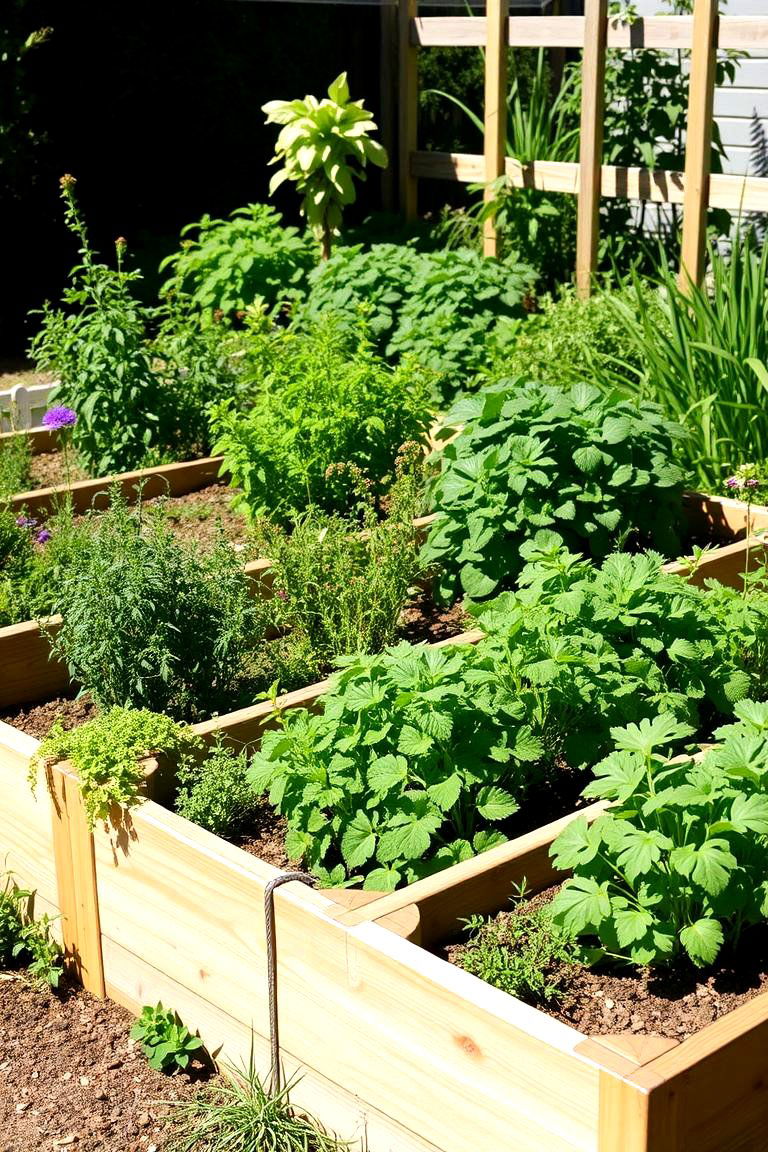
For those with limited space or poor soil, raised garden beds can be a fantastic way to grow Mediterranean plants. These elevated structures offer better drainage and allow you to control the soil quality. Build raised beds using stone, wood, or even repurposed materials to add visual interest to your garden. They are also easier on the back for planting and harvesting. Fill them with a well-draining mix and plant your favorite Mediterranean herbs, vegetables, or flowers.
16. Coastal Charm with Seaside Elements
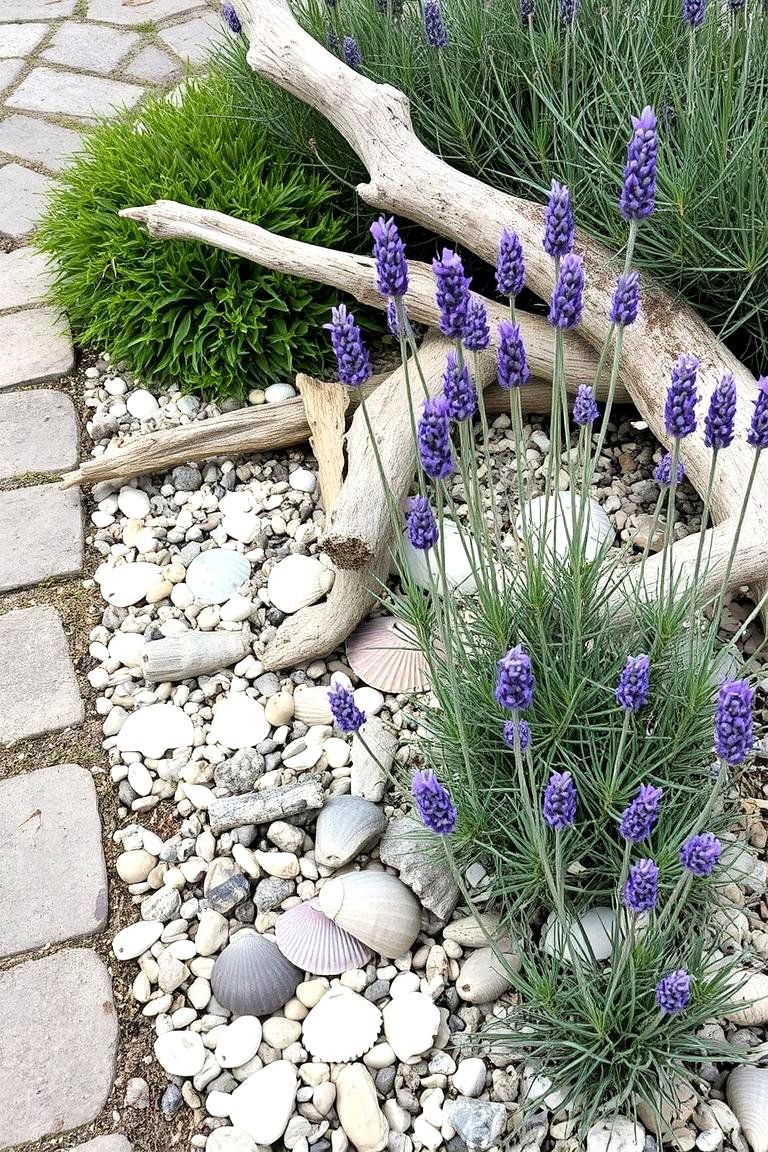
If you live near the coast, consider incorporating seaside elements into your Mediterranean garden design. Use shells, driftwood, and smooth stones as decorative accents. Plant salt-tolerant species like sea lavender or ornamental grasses that evoke the coastal landscape. The sound of wind chimes made from shells can further enhance the seaside ambiance. This theme creates a natural connection between your garden and the surrounding environment.
17. Cheerful Colorful Planters
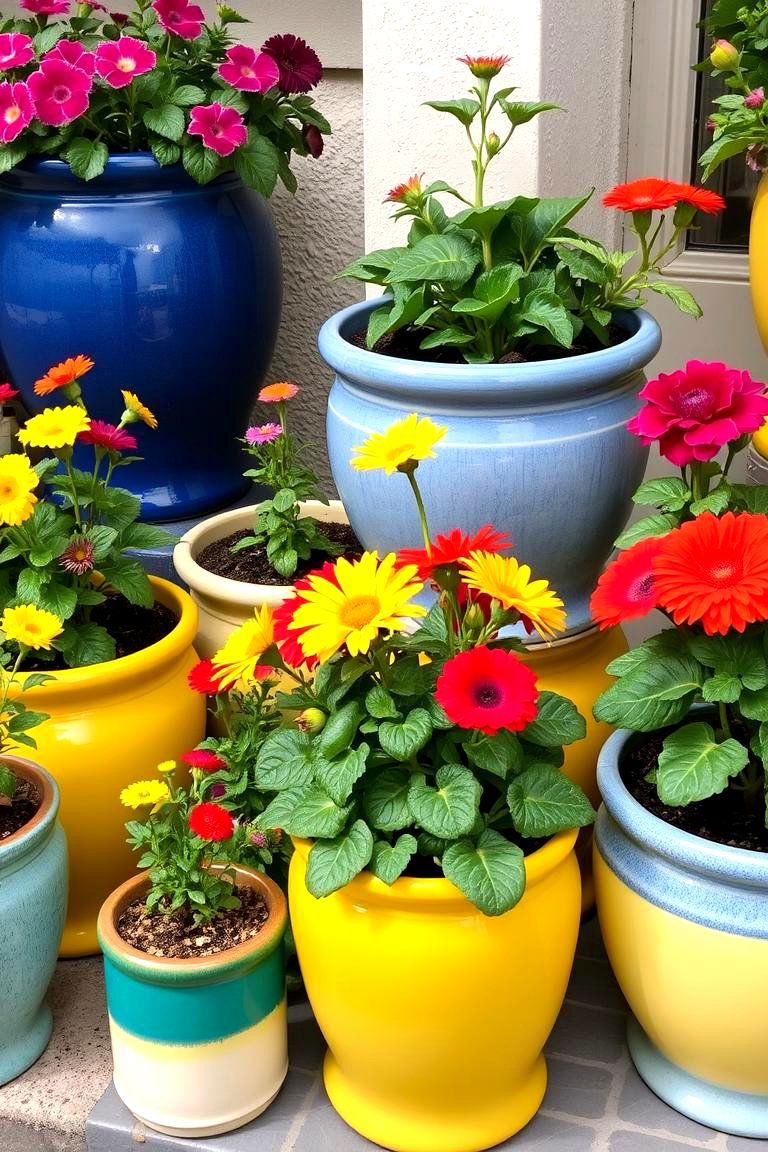
While terracotta is a classic choice, don't shy away from using colorful glazed planters to add pops of vibrancy to your Mediterranean garden. Choose planters in shades of blue, yellow, orange, and green to reflect the bright and cheerful spirit of the Mediterranean. Group different colored planters together or use them to highlight specific plants. Ensure the planters have drainage holes to prevent waterlogging.
18. Enchanting Outdoor Lighting
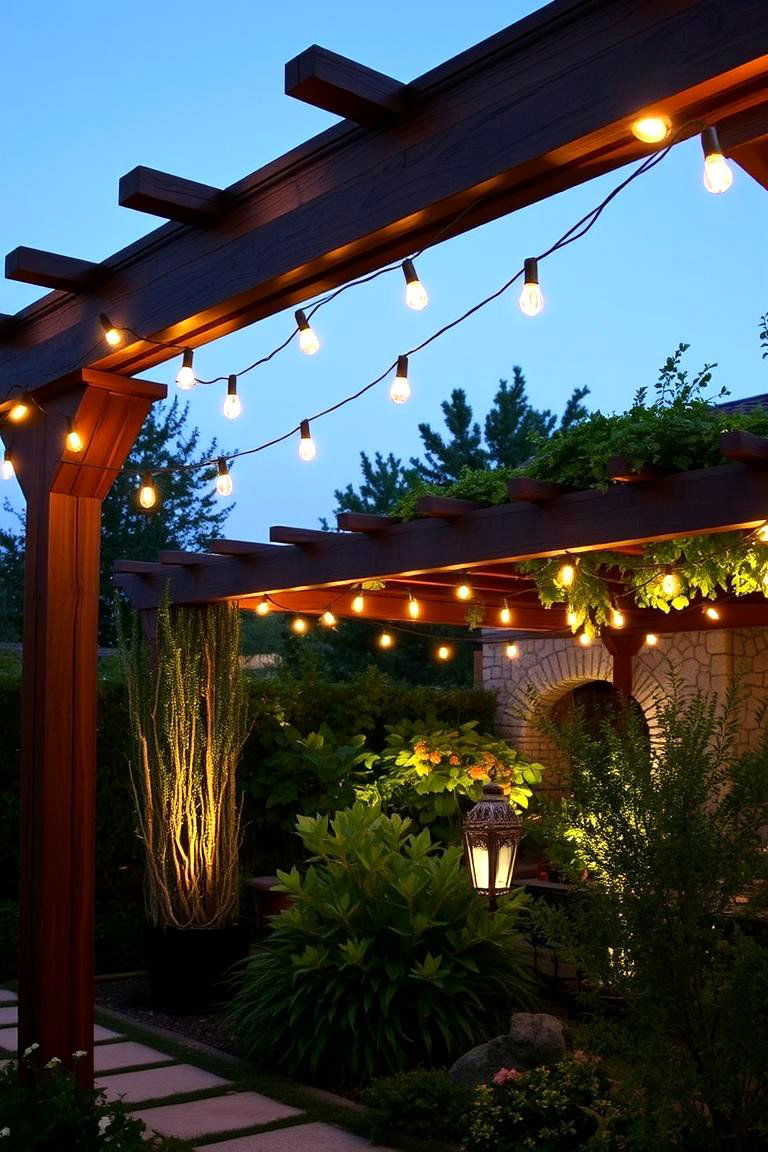
As evening falls, the right outdoor lighting can transform your Mediterranean garden into an enchanting space. Consider using string lights draped across pergolas or trees, lanterns placed along pathways, or spotlights to highlight focal points like olive trees or water features. Warm-toned lighting will create a cozy and inviting atmosphere, perfect for enjoying evenings outdoors. Solar-powered lights are a sustainable and convenient option.
19. Versatile Rosemary Bushes
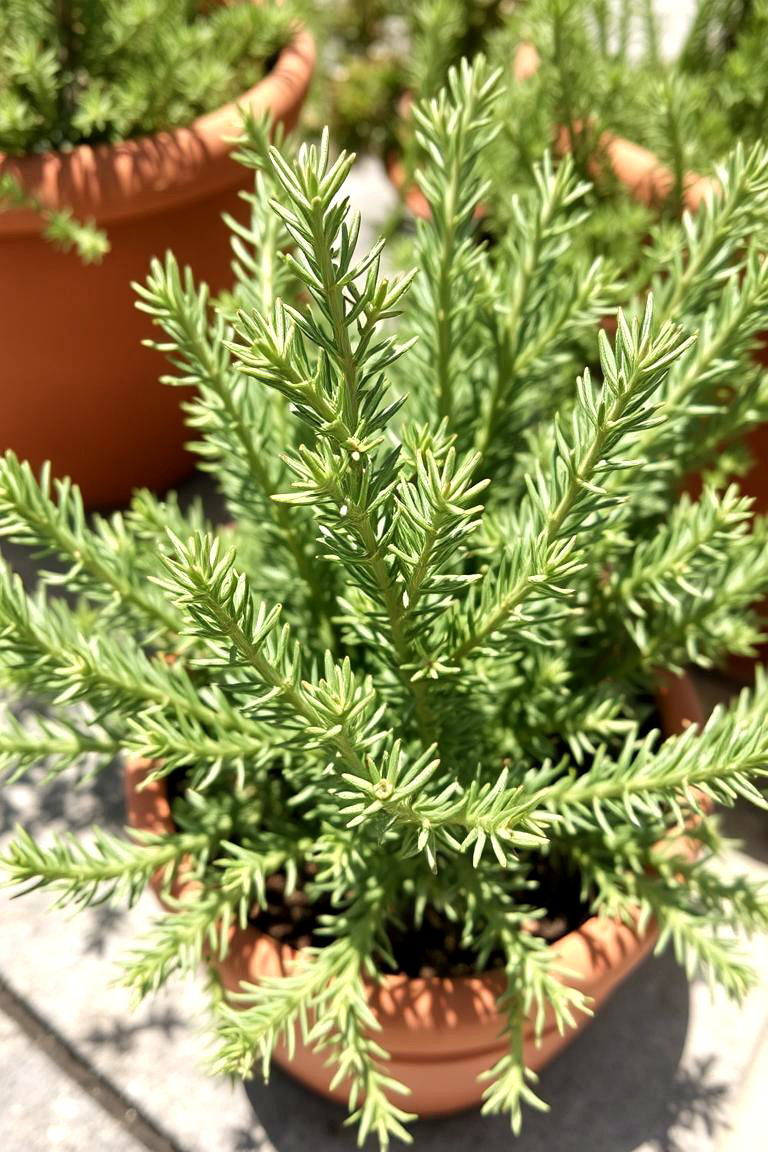
Rosemary is an indispensable herb in any Mediterranean garden. Its fragrant, needle-like foliage adds texture and aroma, and it's incredibly versatile. Plant rosemary as a low hedge, in containers, or even allow it to cascade over walls. It's drought-tolerant and thrives in full sun. Besides its culinary uses, rosemary's evergreen nature provides year-round interest in the garden.
20. Statuesque Cypress Sentinels
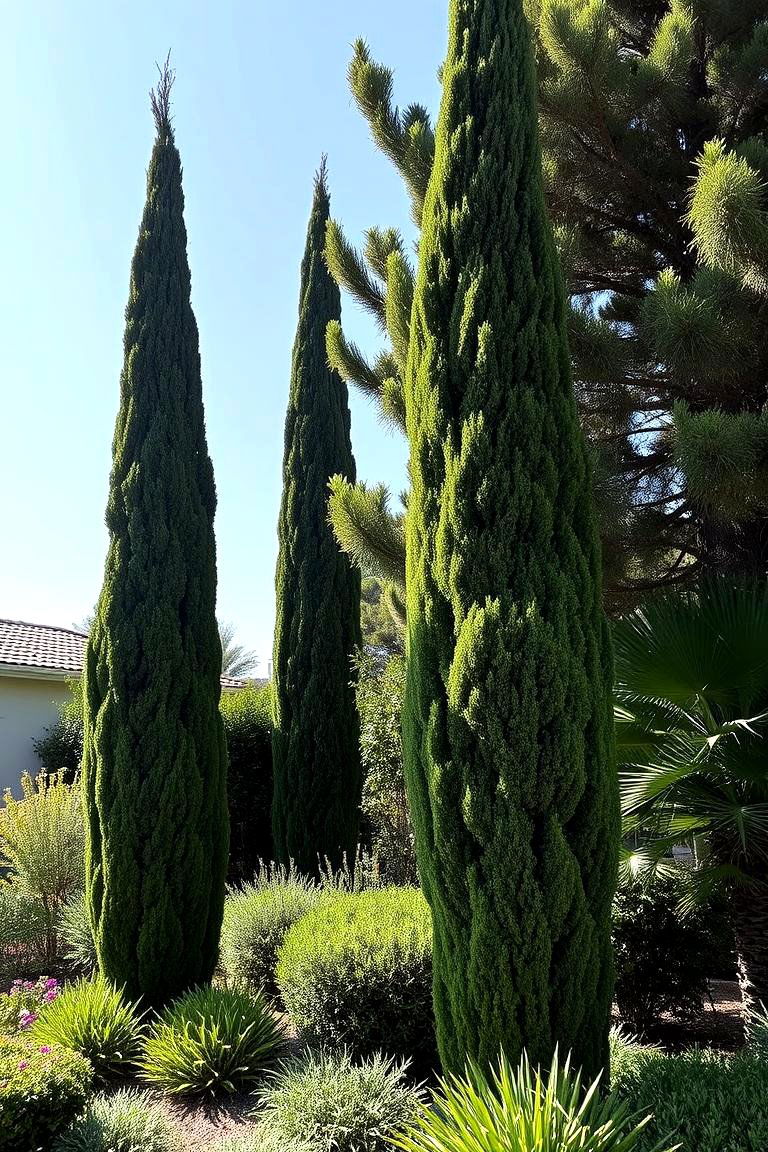
Tall, slender cypress trees are iconic features of the Mediterranean landscape, often seen lining driveways or standing as elegant sentinels. While they can grow quite large, there are also smaller, more compact varieties available for smaller gardens. Their upright form adds a vertical element and a sense of formality to the garden design. Ensure they have well-drained soil and plenty of sunlight.
21. Inviting Shady Sanctuaries
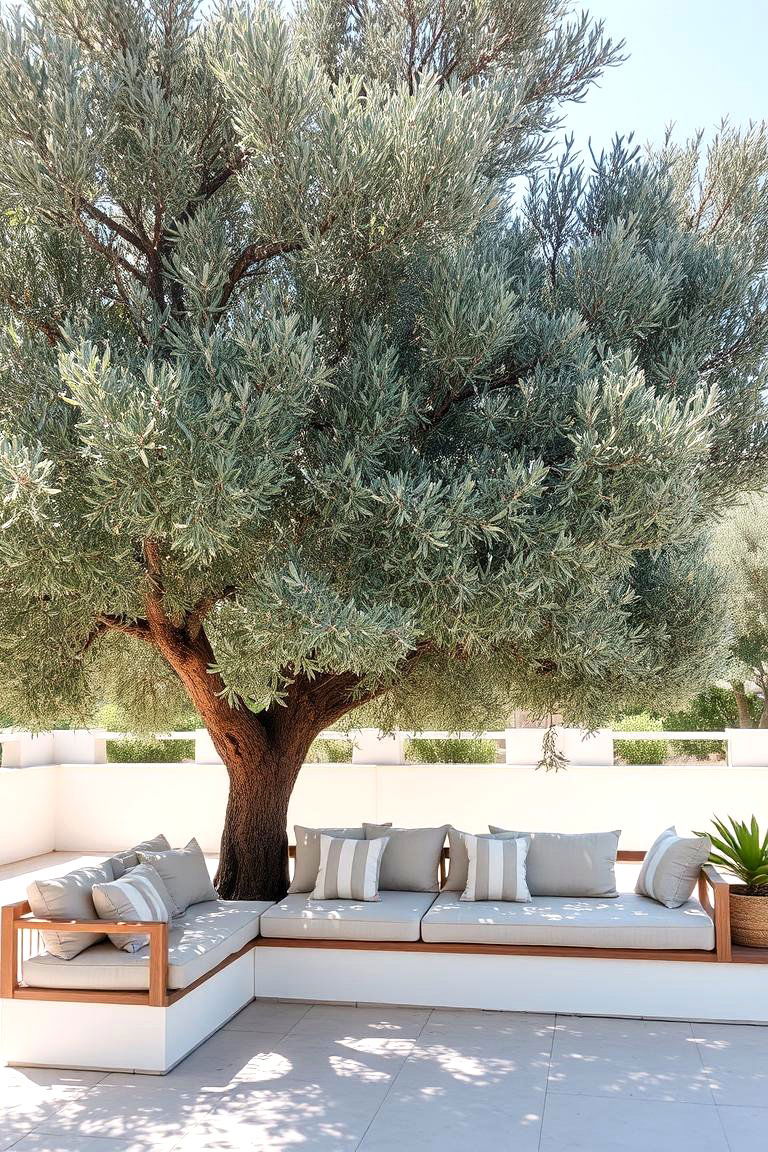
Creating a comfortable and shady seating area is crucial for enjoying your Mediterranean garden during hot summer days. This could be under a pergola, a large tree, or even a covered patio. Furnish the space with comfortable seating, perhaps with cushions in natural fabrics and colors. The shade will provide a welcome respite from the sun and create a perfect spot for relaxation and conversation.
22. Timeless Decorative Urns
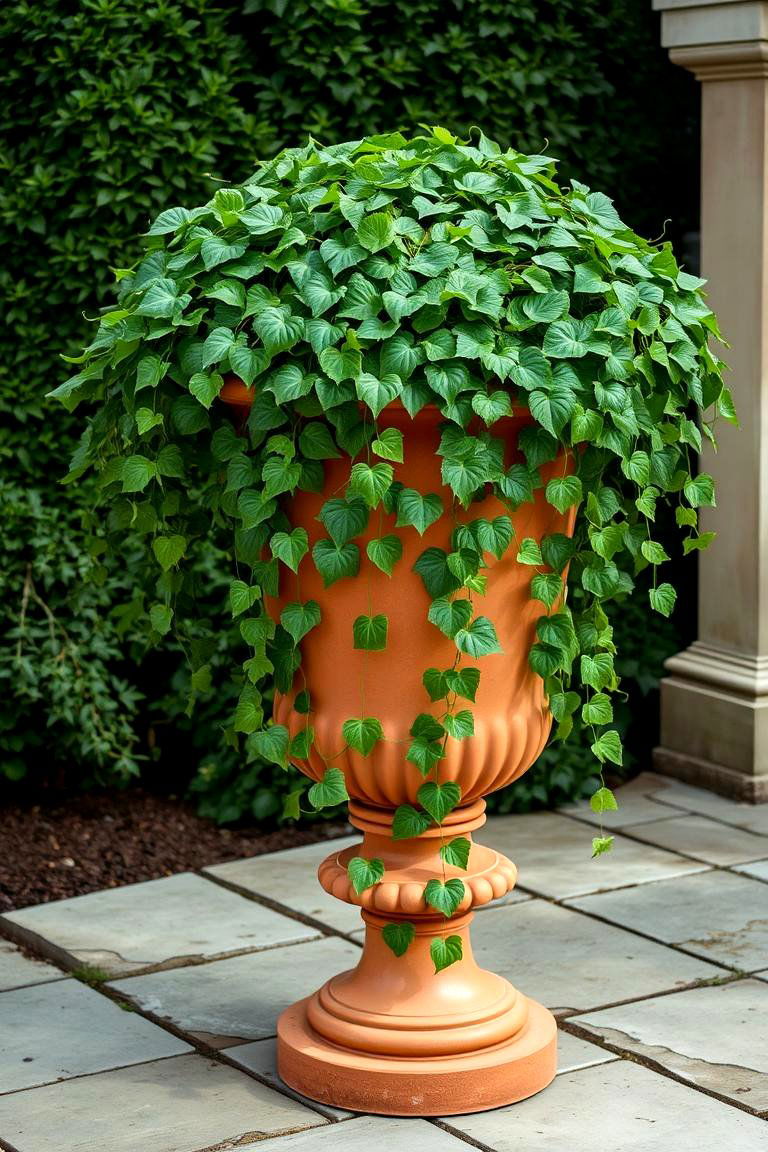
Large decorative urns, often made of terracotta or stone, add a touch of classical elegance to a Mediterranean garden. These statement pieces can be placed at the entrance of a pathway, on a patio, or as focal points within planting beds. Fill them with cascading plants or leave them empty as sculptural elements. Their timeless design complements the overall aesthetic of a Mediterranean garden.
23. Charming Stepping Stone Trails
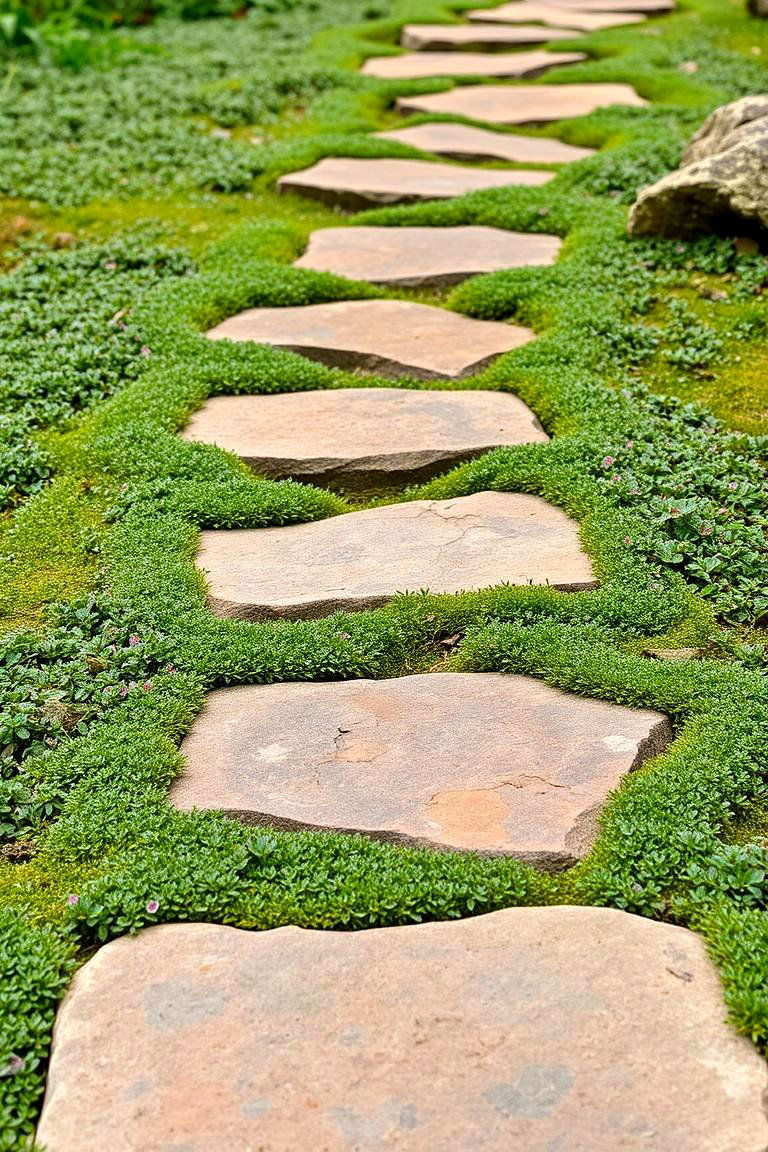
Instead of a solid pathway, consider creating a charming trail using stepping stones interspersed with gravel or ground cover. This adds a more informal and natural feel to the garden. Choose stepping stones made of natural materials like stone or slate. Plant low-growing, creeping plants like thyme or creeping jenny between the stones to soften the edges and add texture.
24. Artful Mediterranean Sculpture
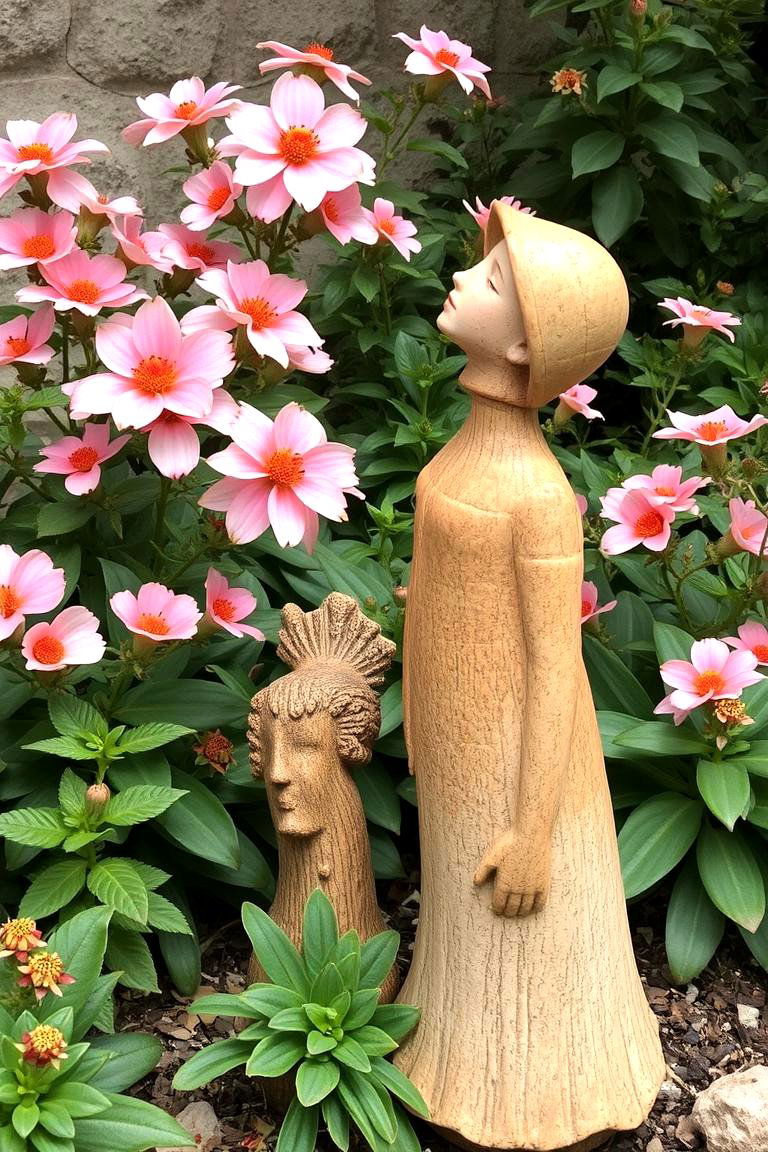
Adding a piece of sculpture can bring a unique artistic element to your Mediterranean garden. Choose a sculpture that reflects the style and spirit of the region, perhaps a classical figure, an abstract piece in natural materials, or even a handcrafted ceramic artwork. Position the sculpture strategically to create a focal point or to complement the surrounding planting.
Conclusion:
Embracing the essence of the Mediterranean in your garden design is about more than just aesthetics; it's about cultivating a space that promotes relaxation, enjoyment, and a connection with nature. From the sun-drenched terracotta to the fragrant lavender and the iconic olive trees, each element contributes to a harmonious and inviting outdoor sanctuary. By thoughtfully incorporating these Mediterranean garden ideas, you can transform your backyard into a personal oasis that captures the timeless beauty and enduring charm of the Mediterranean coast, creating a haven to savor for years to come.


